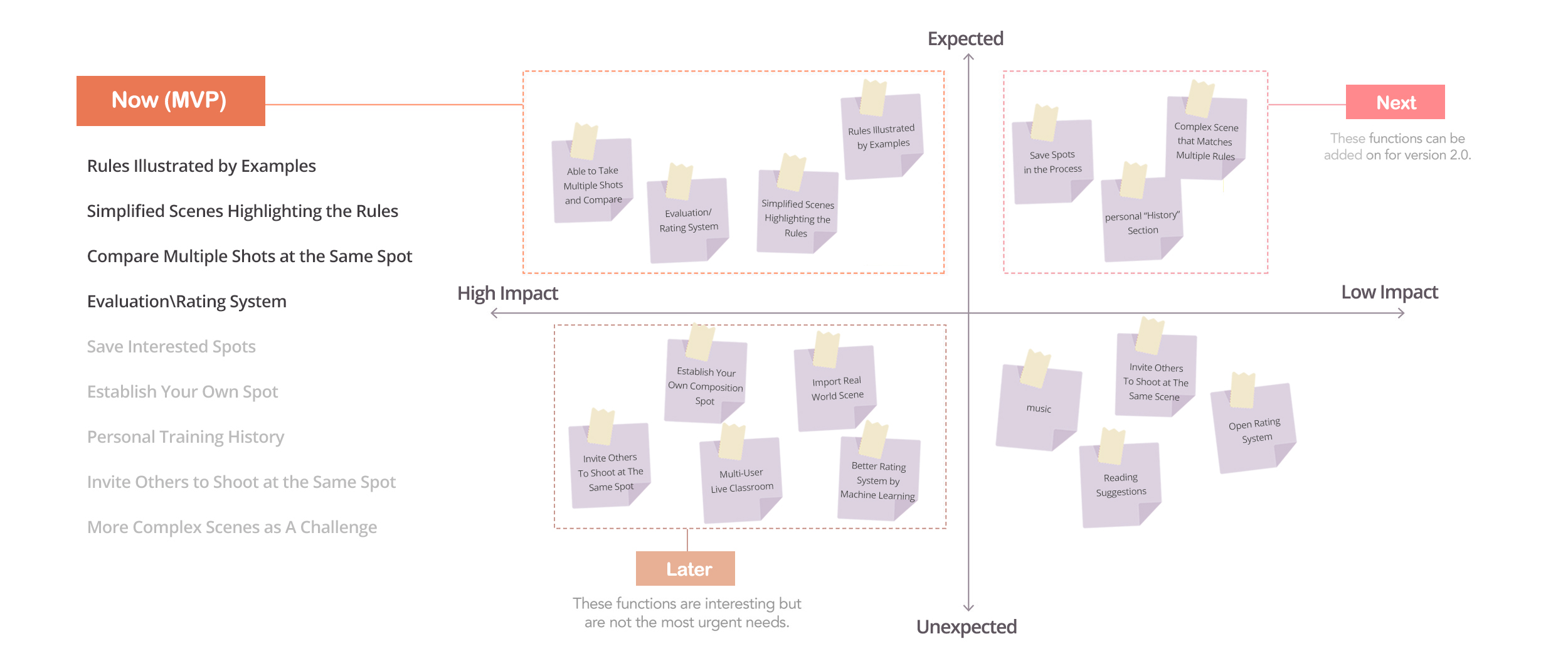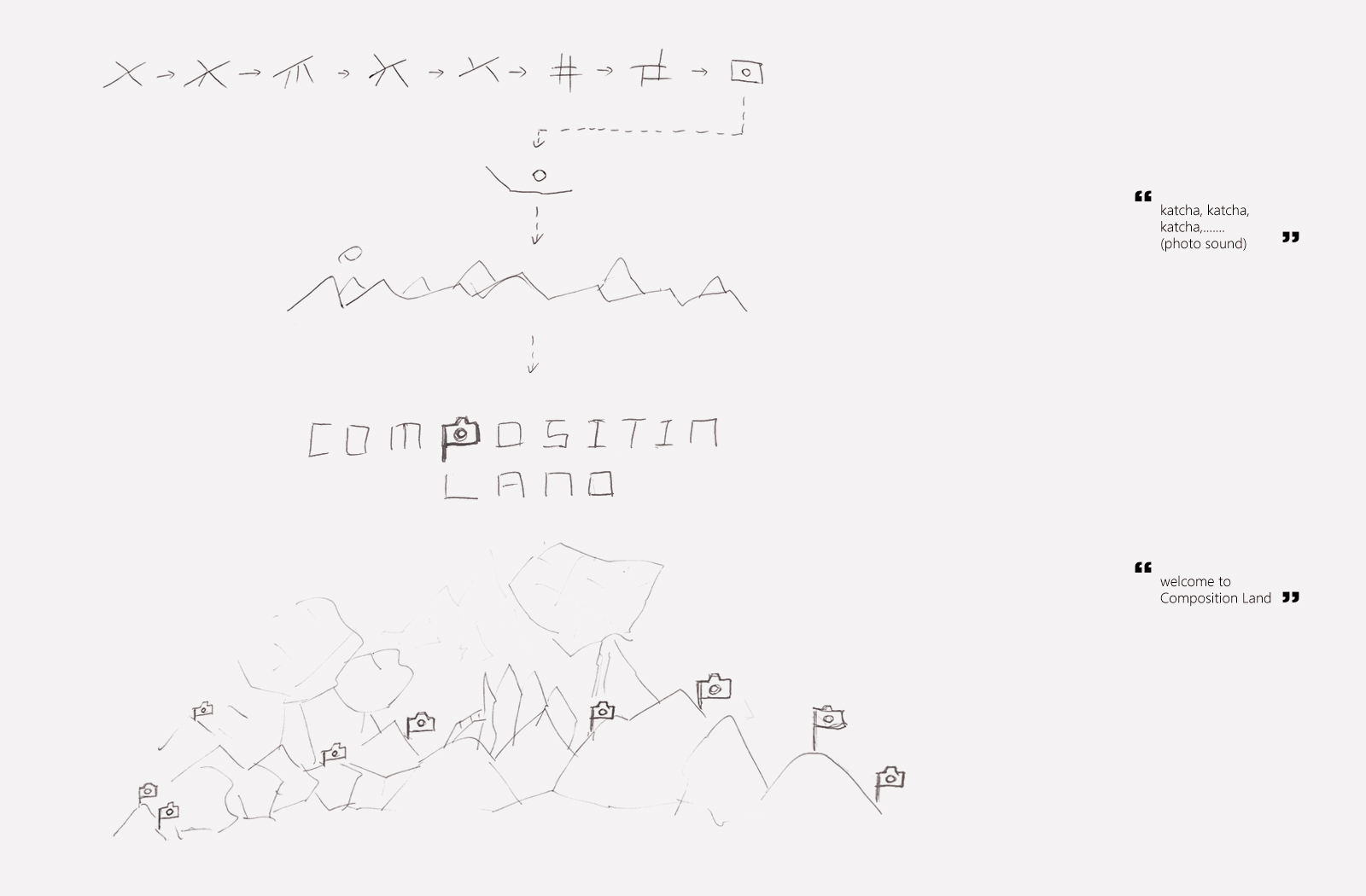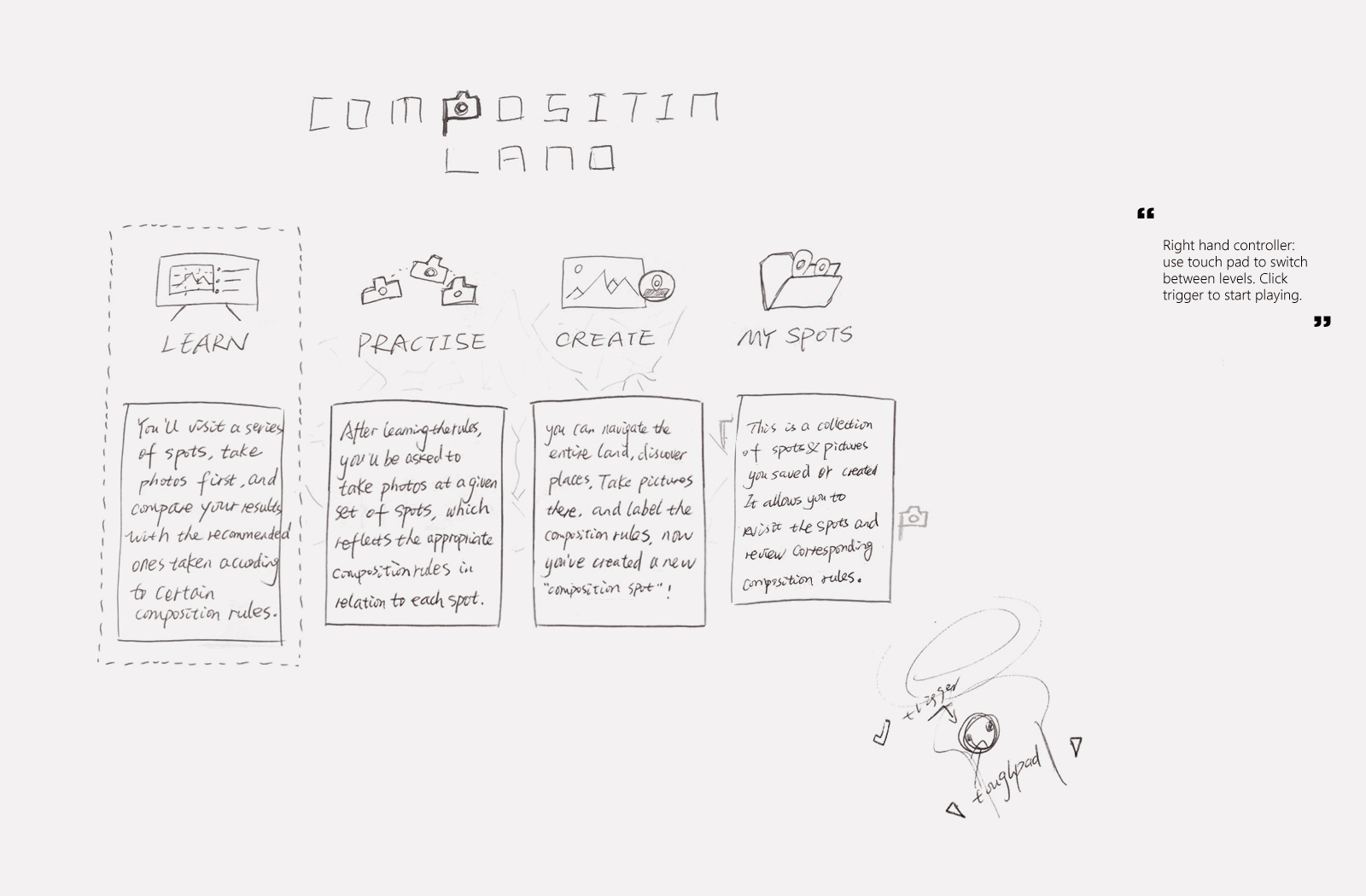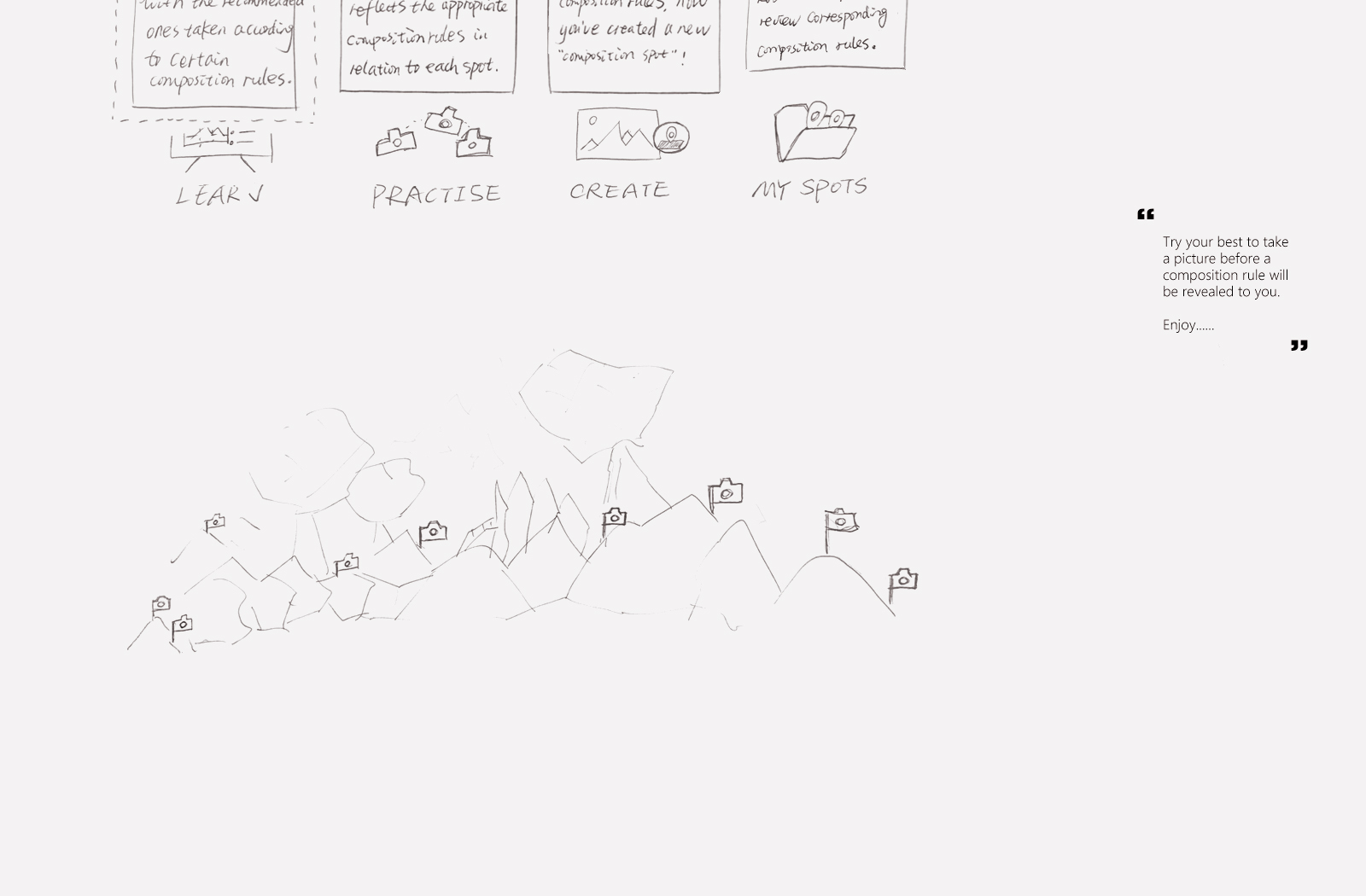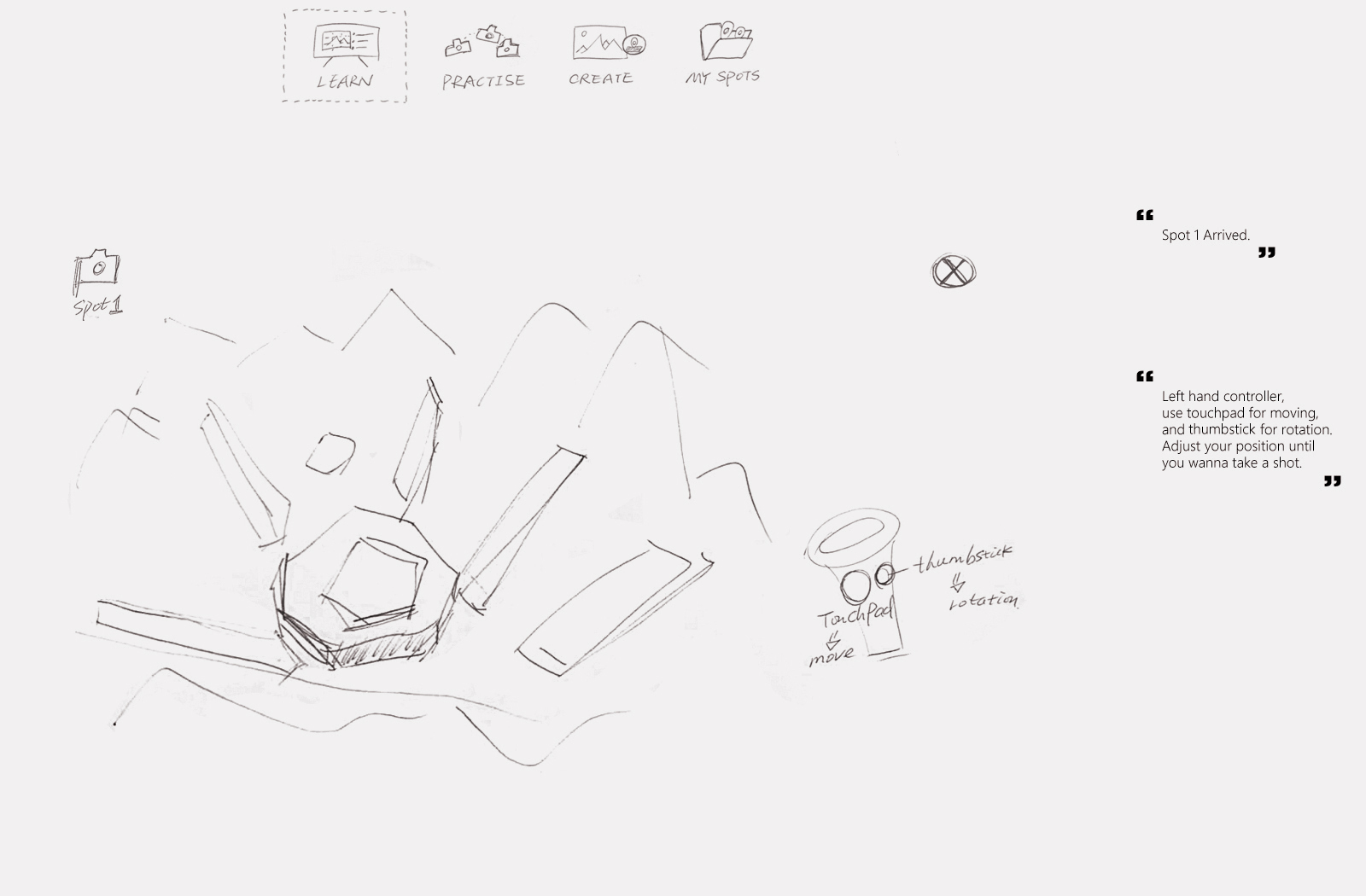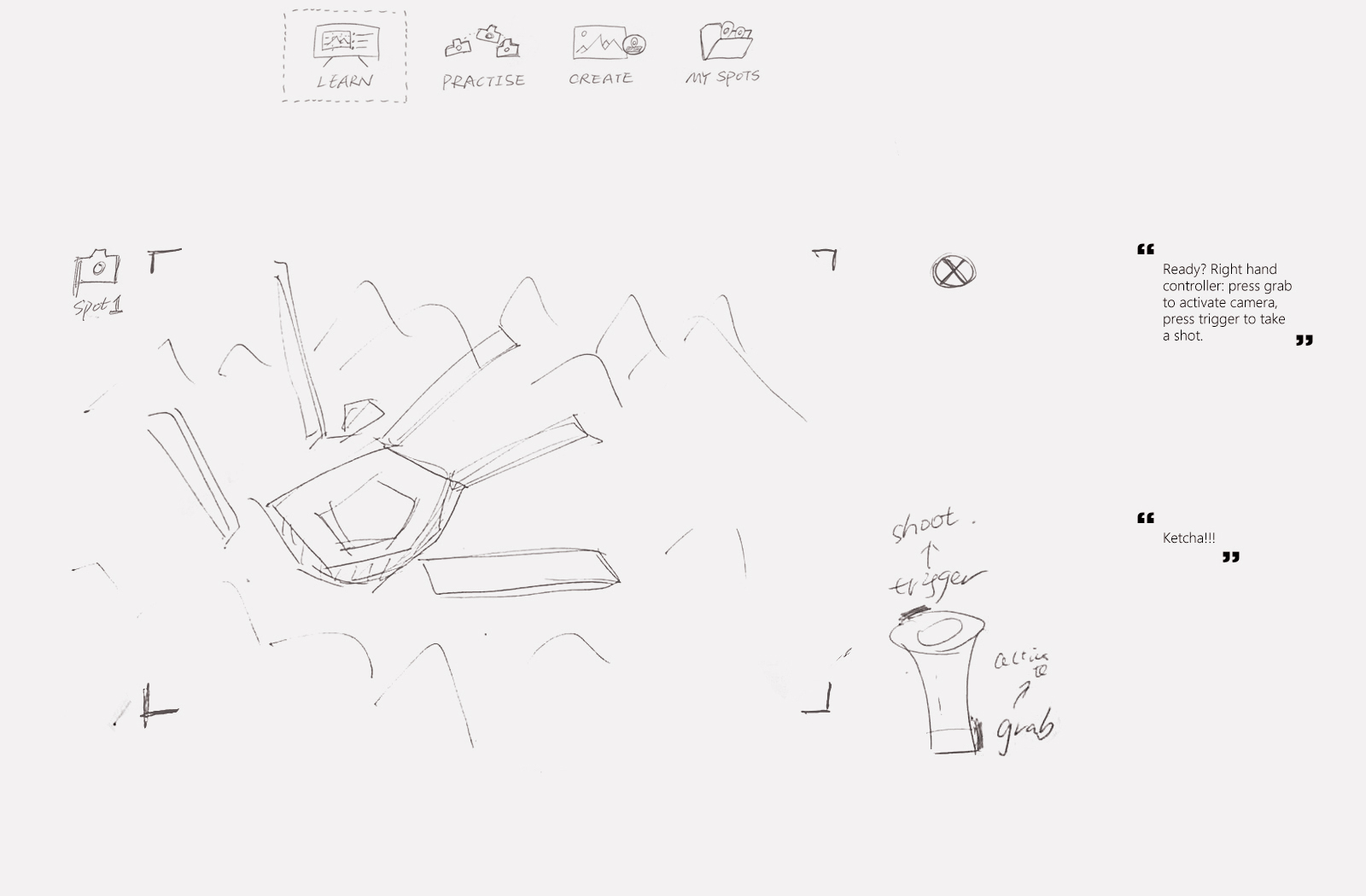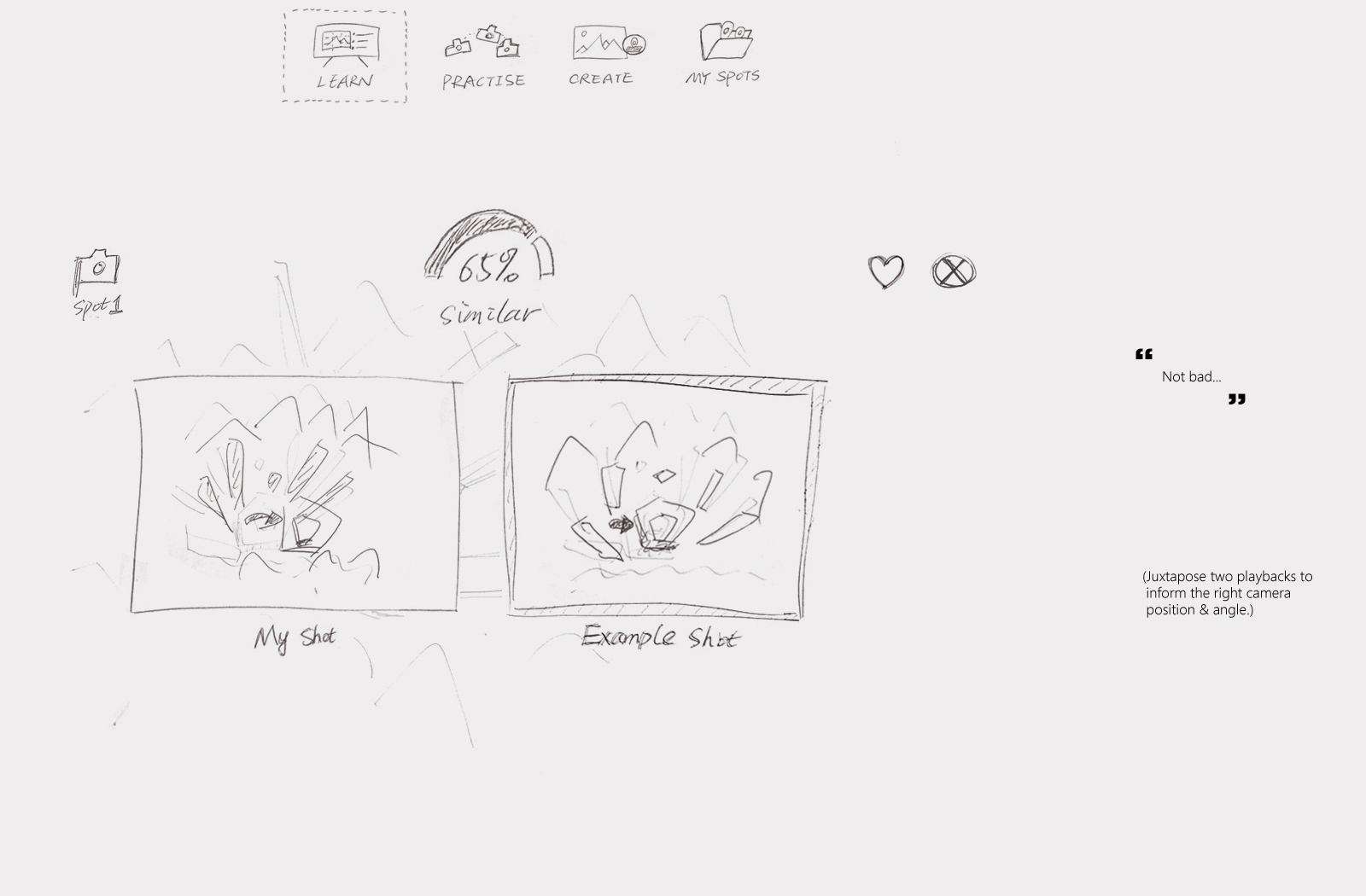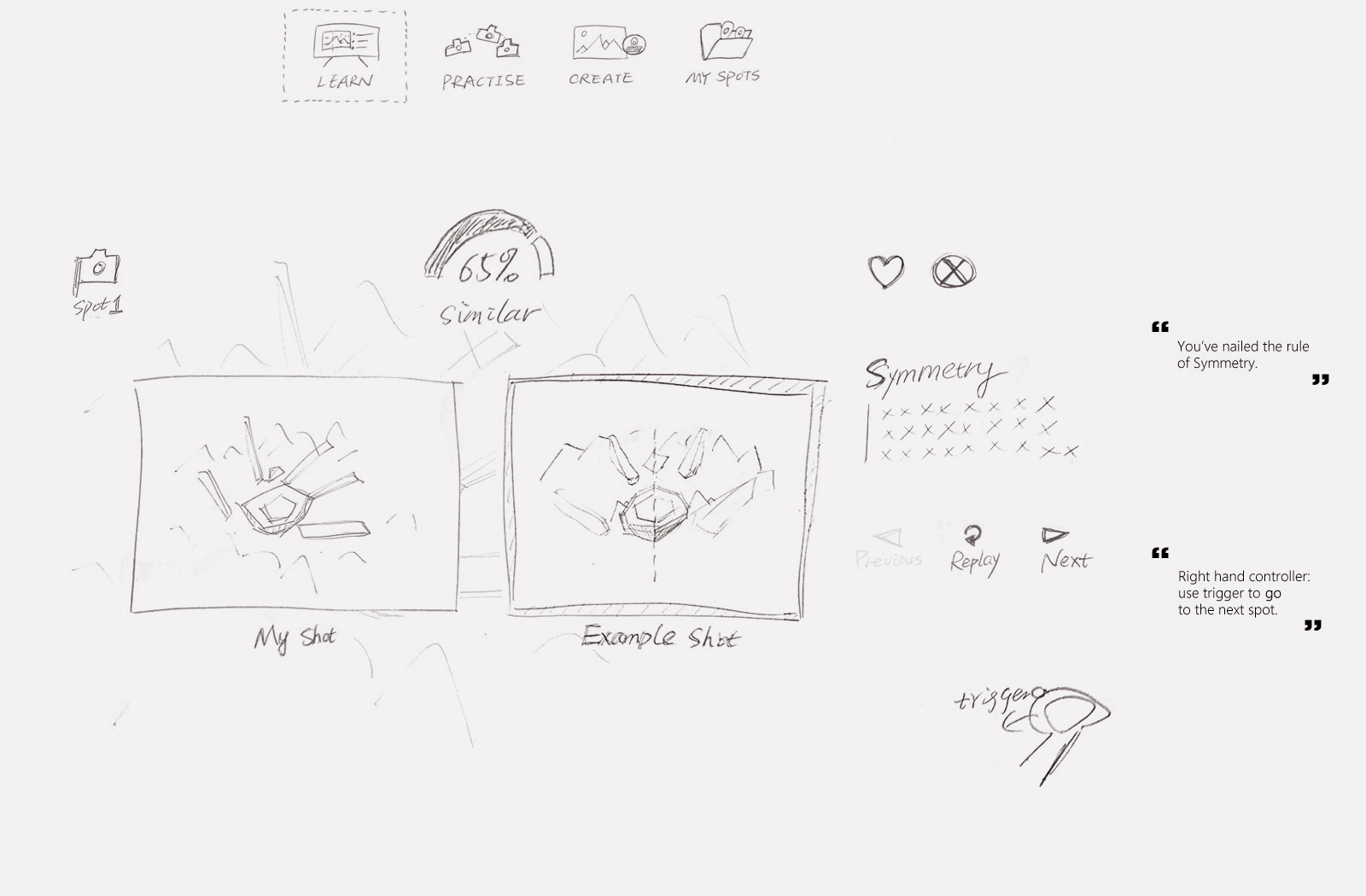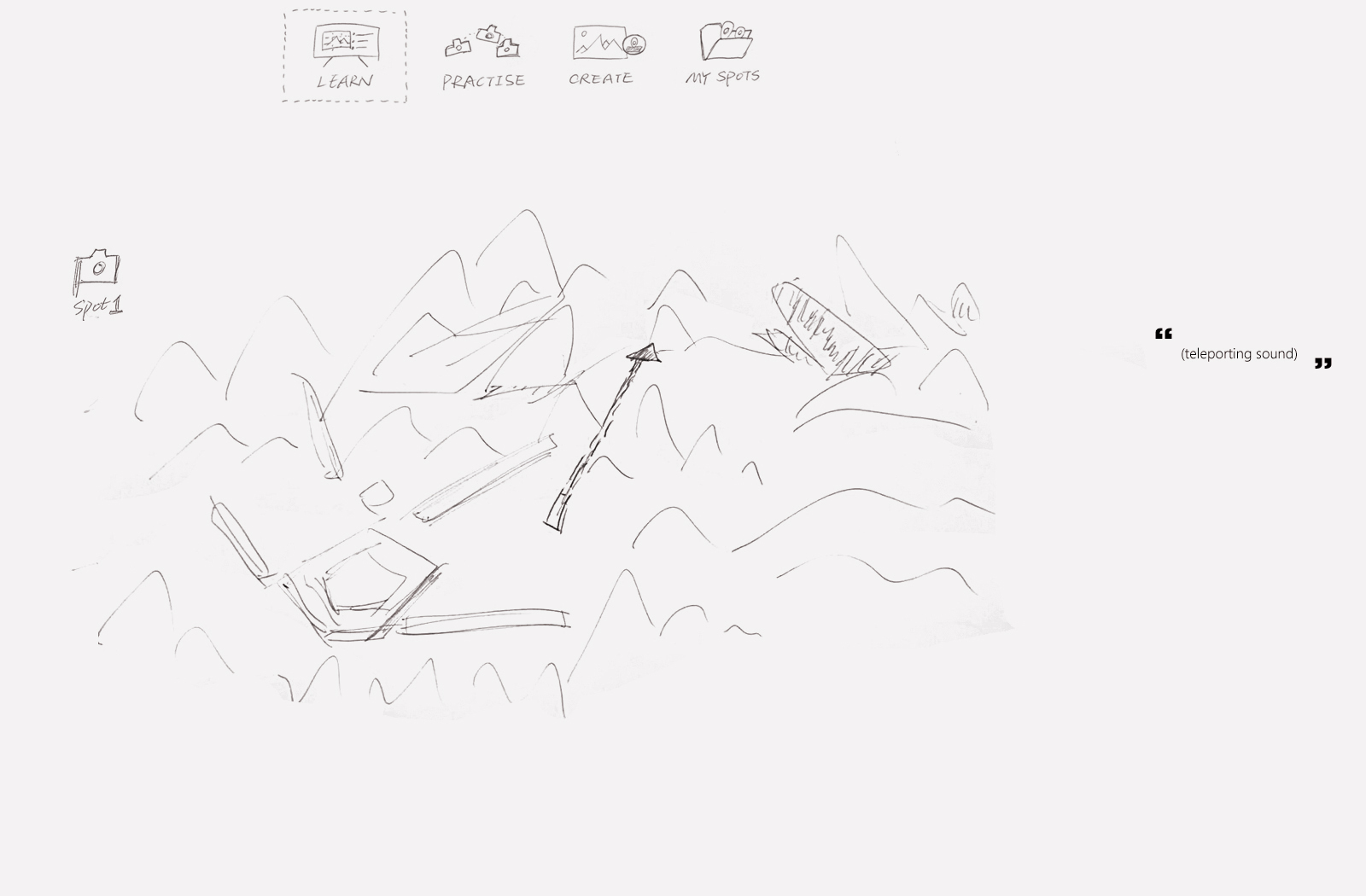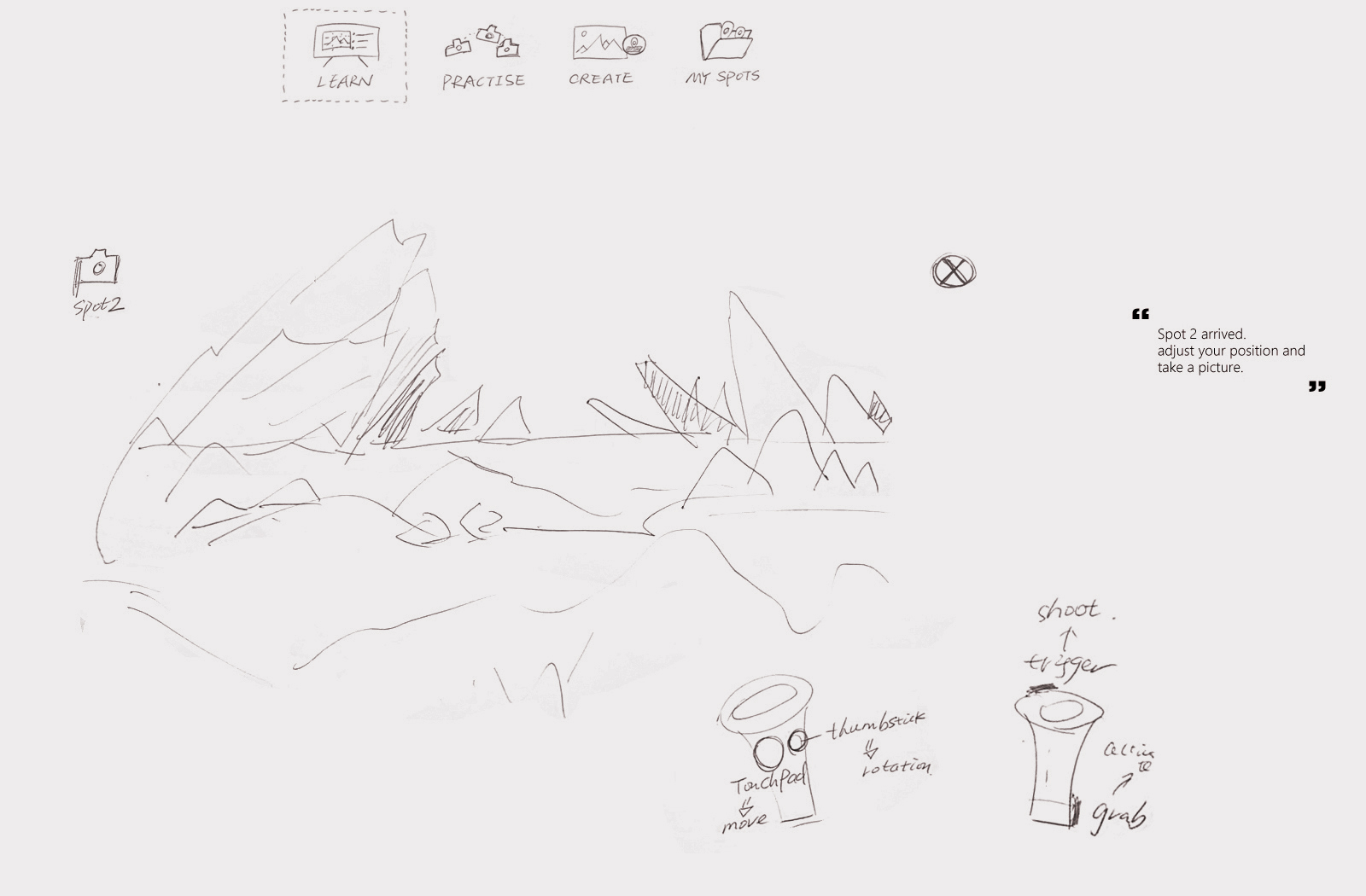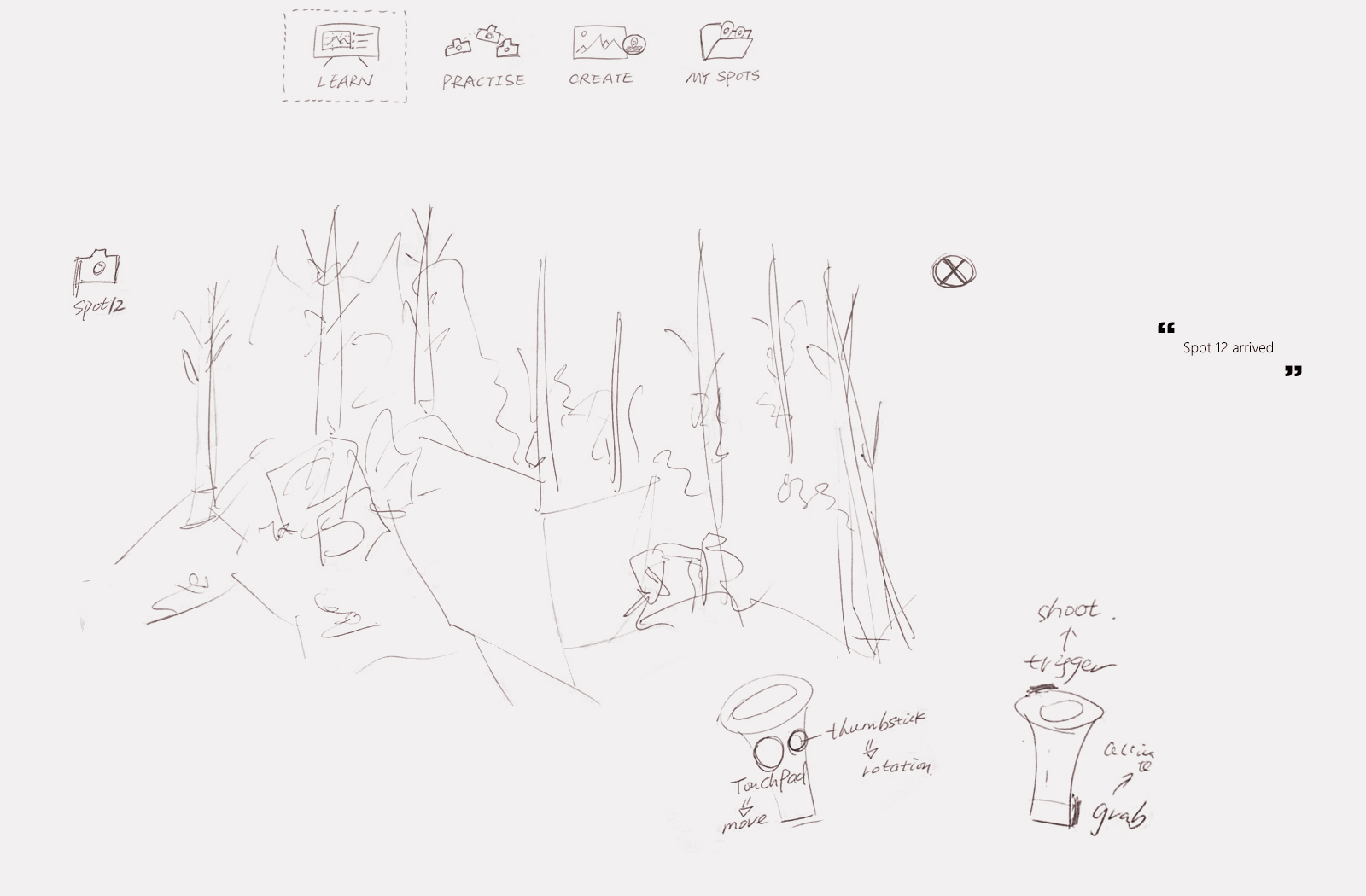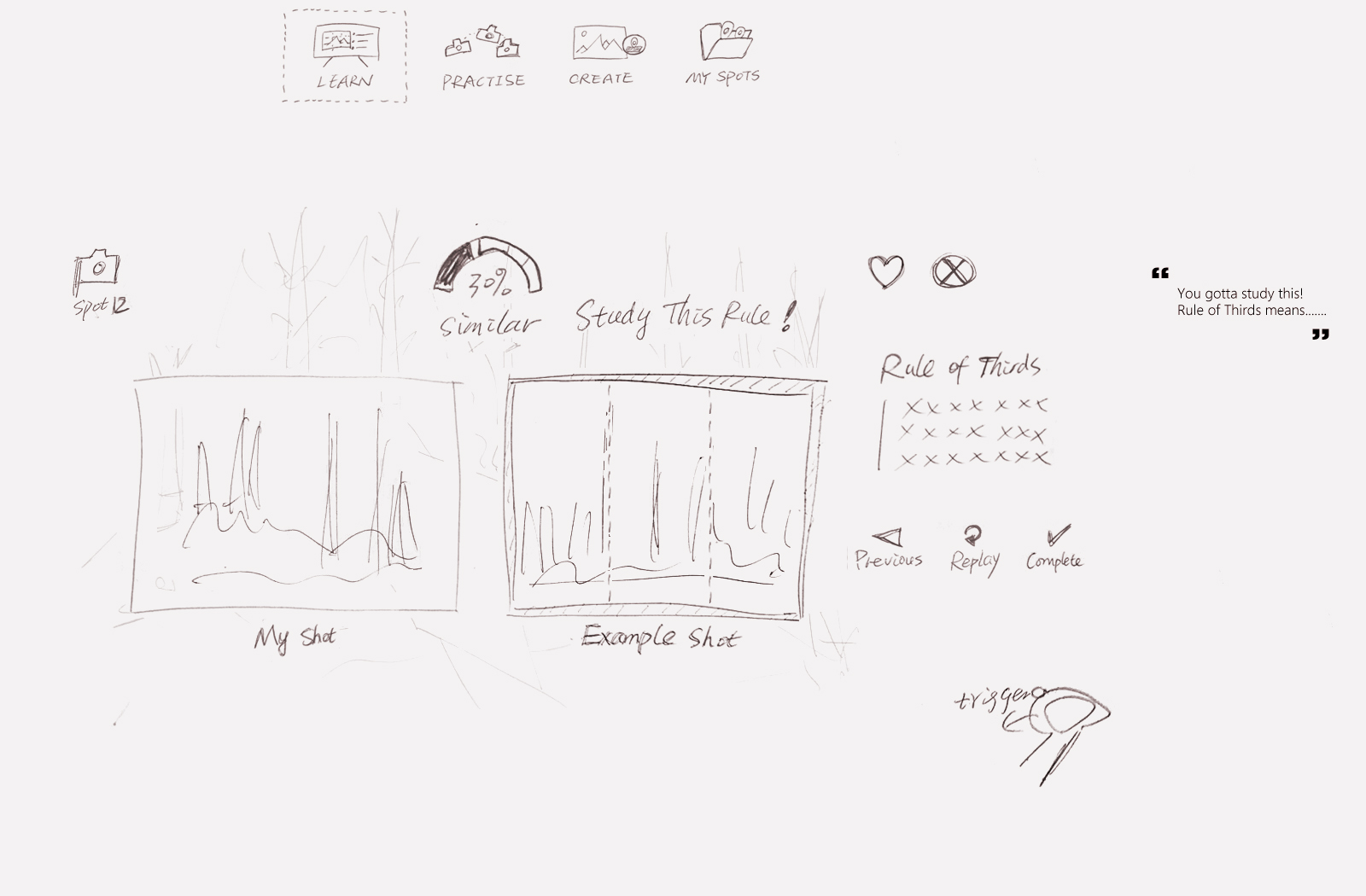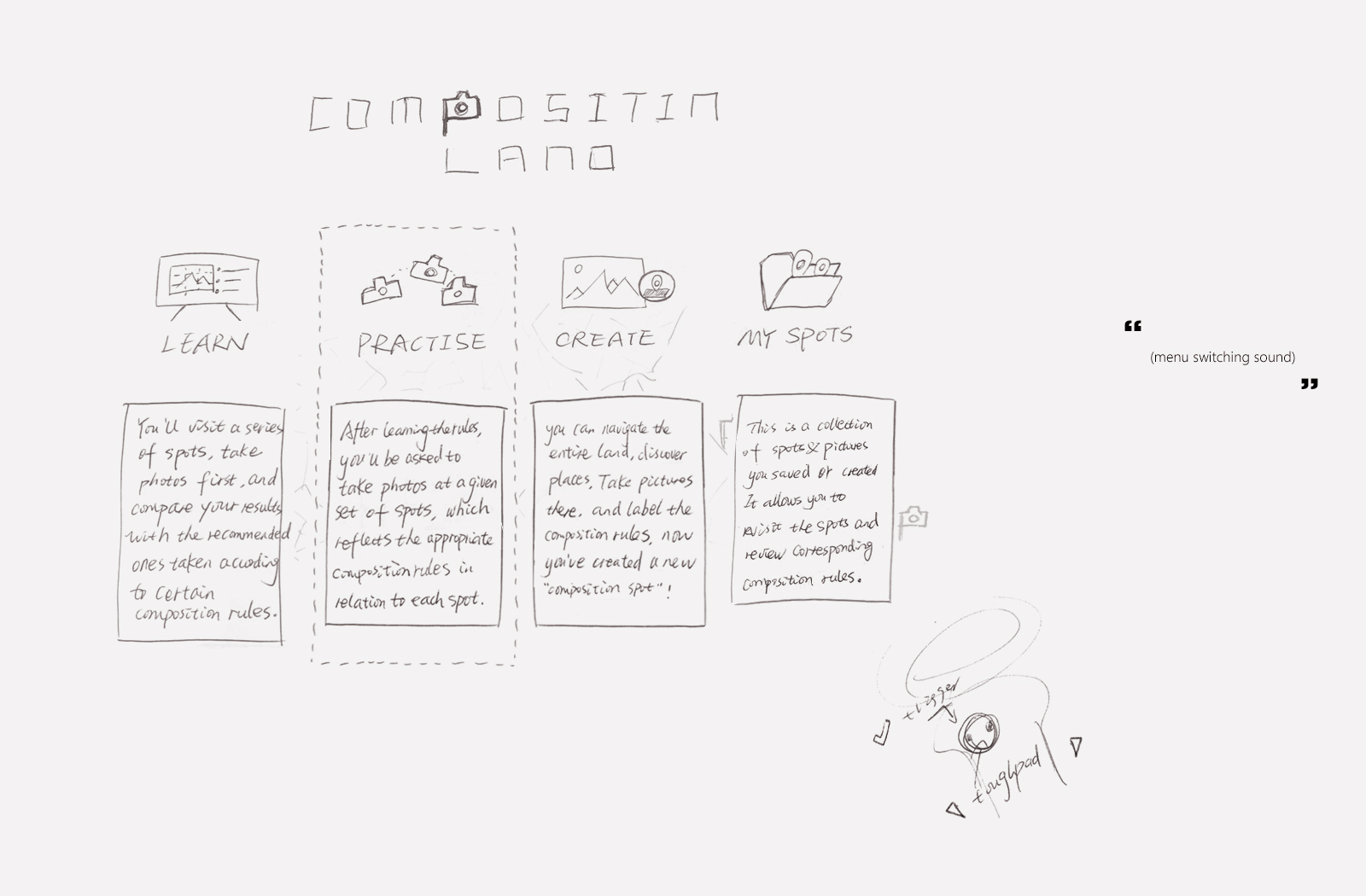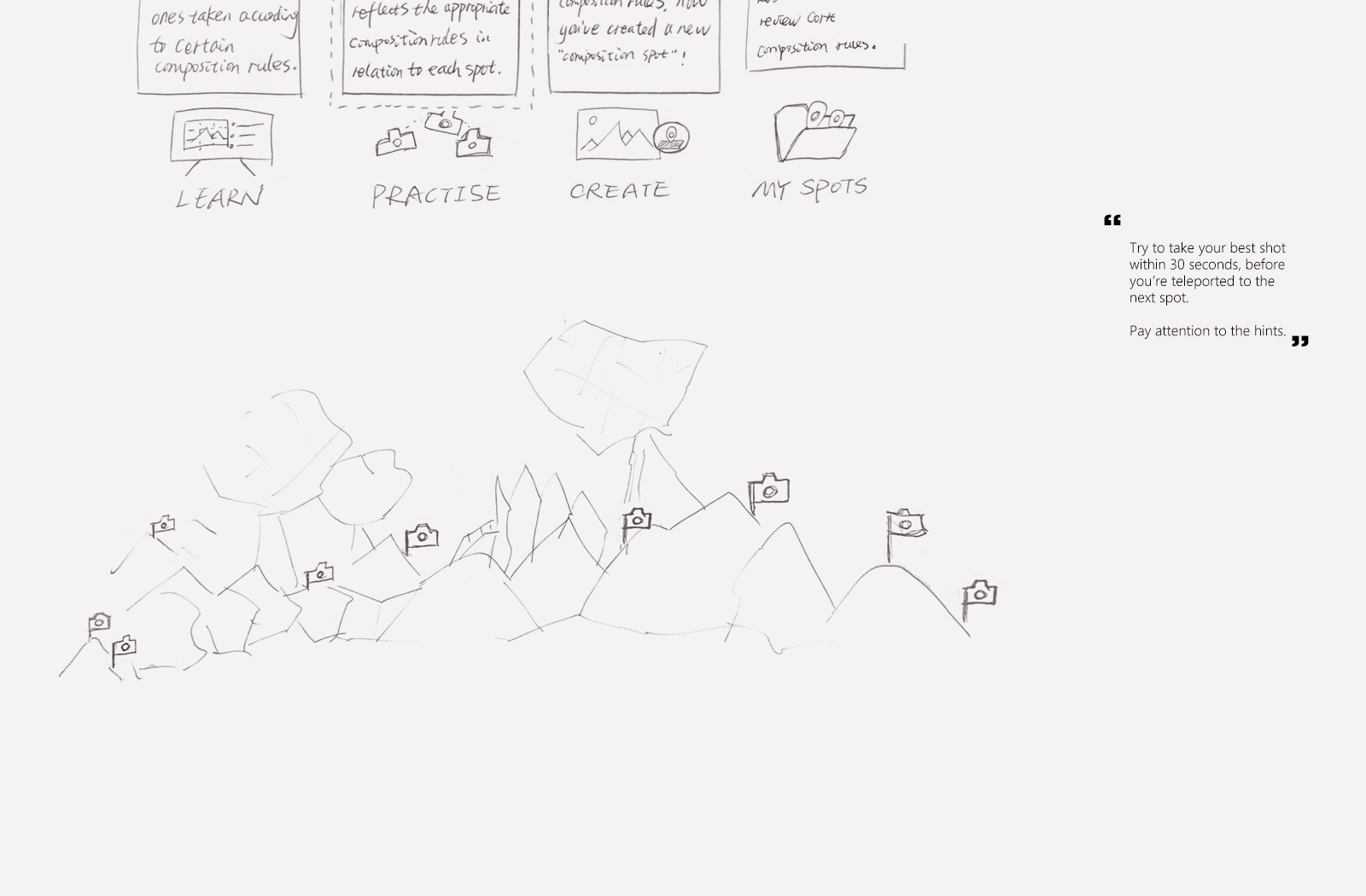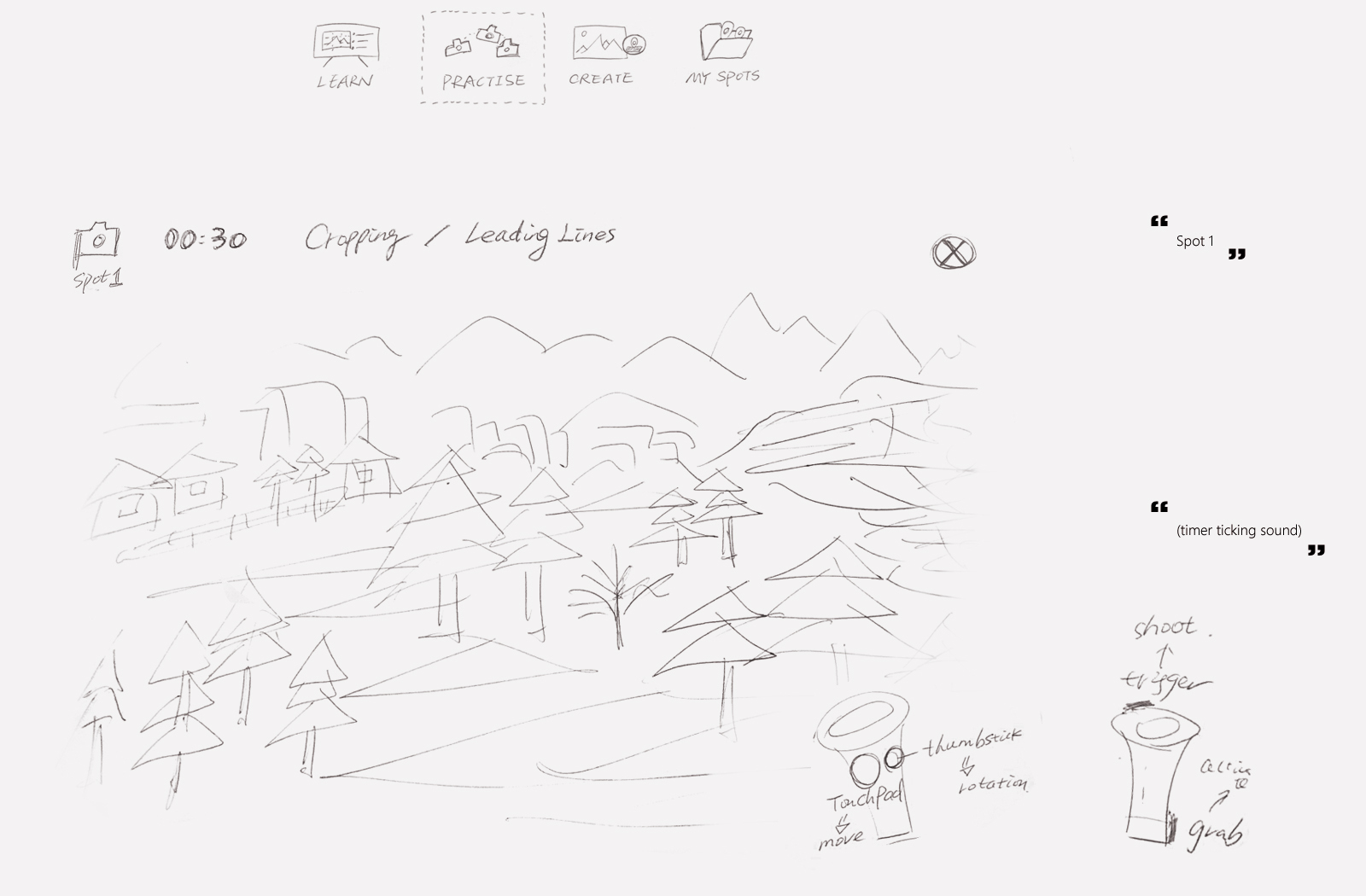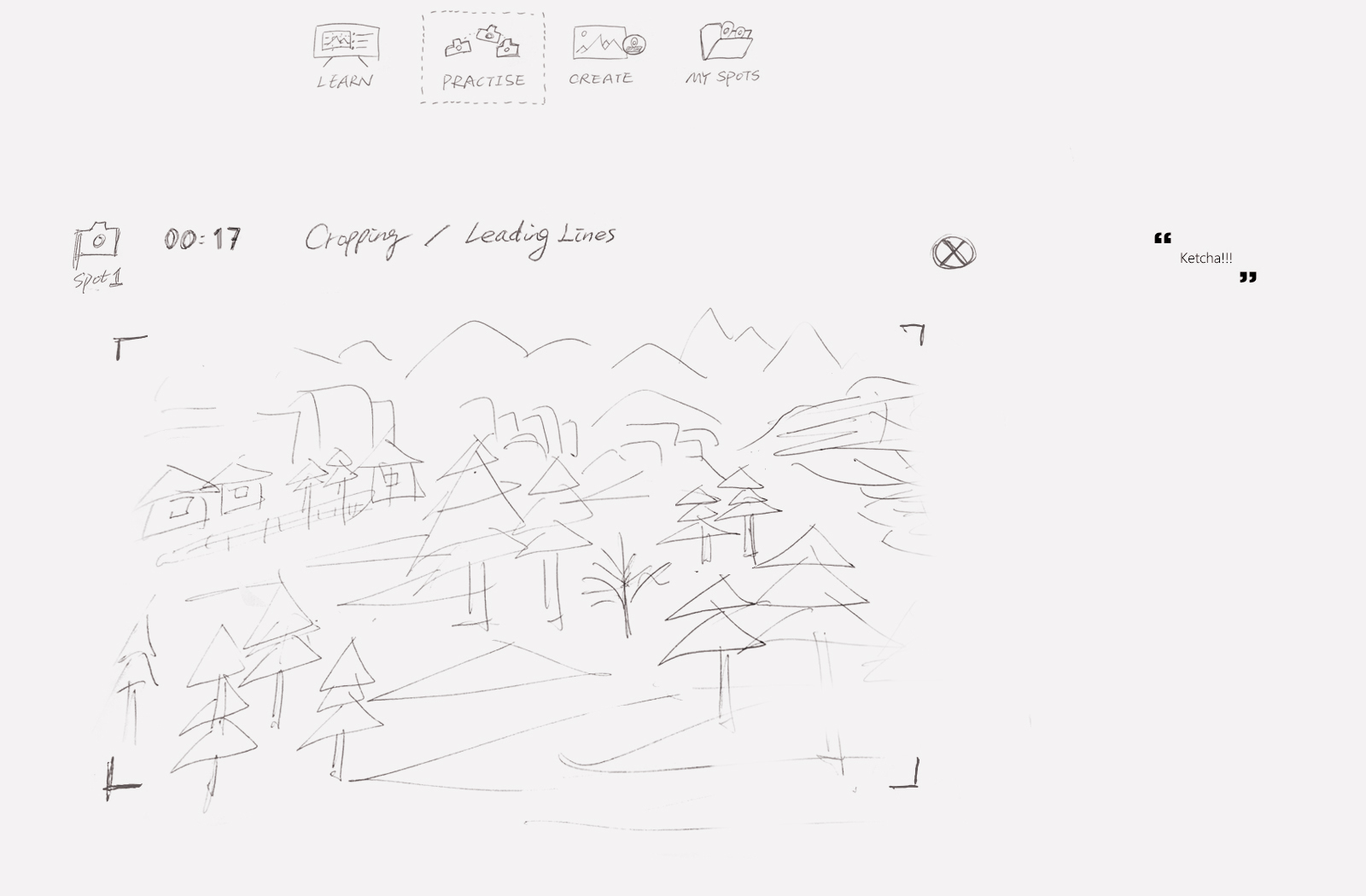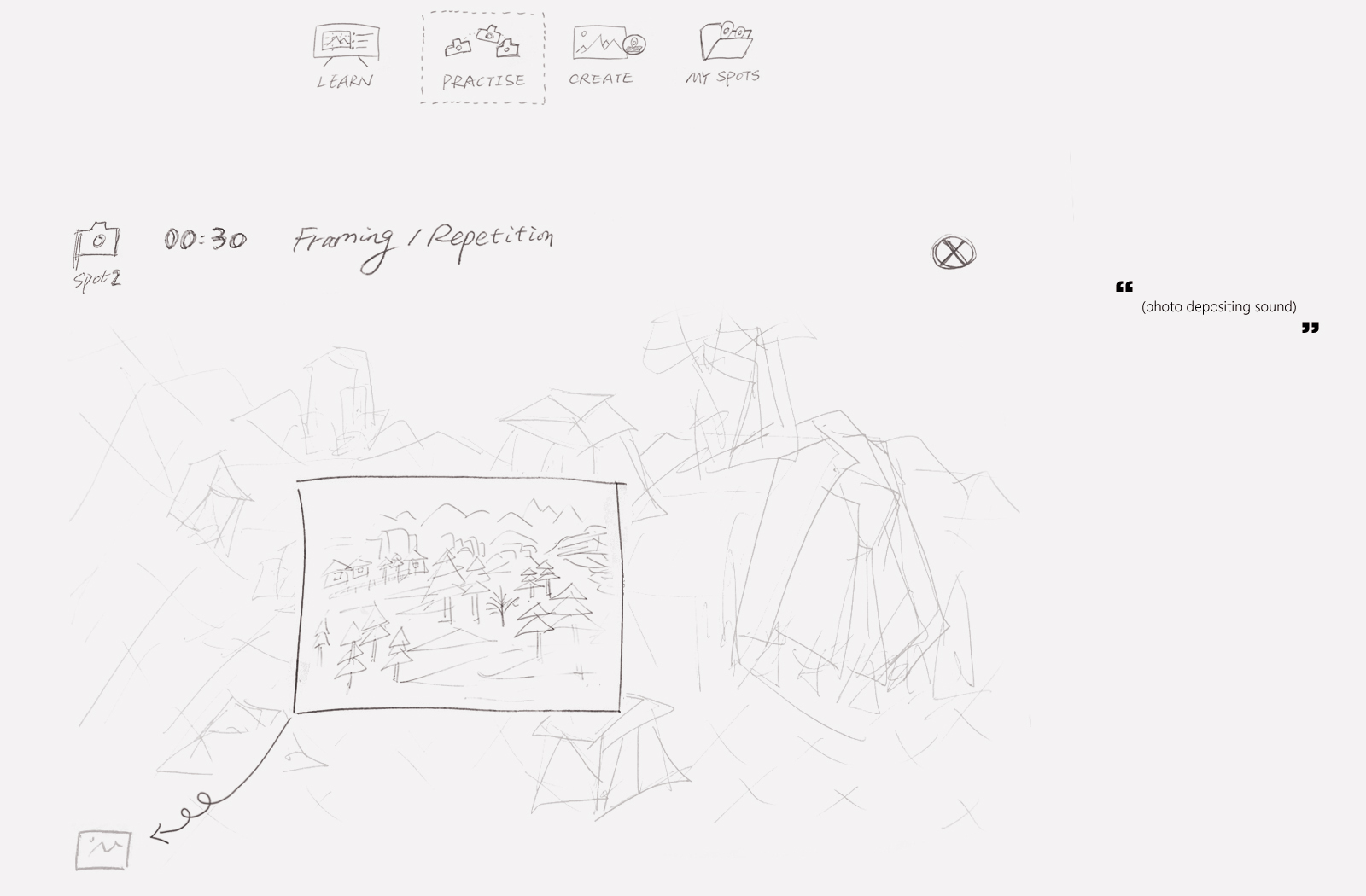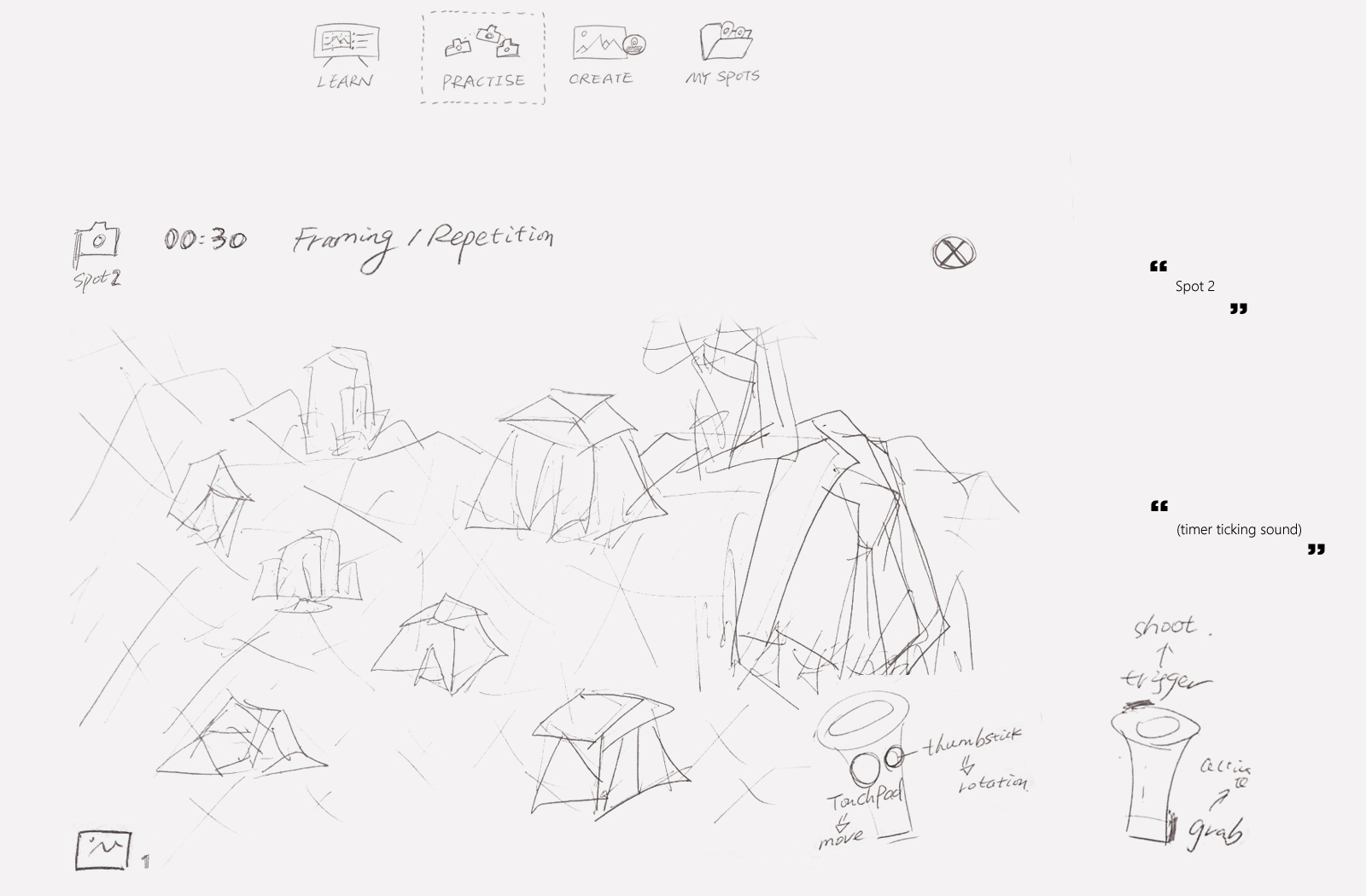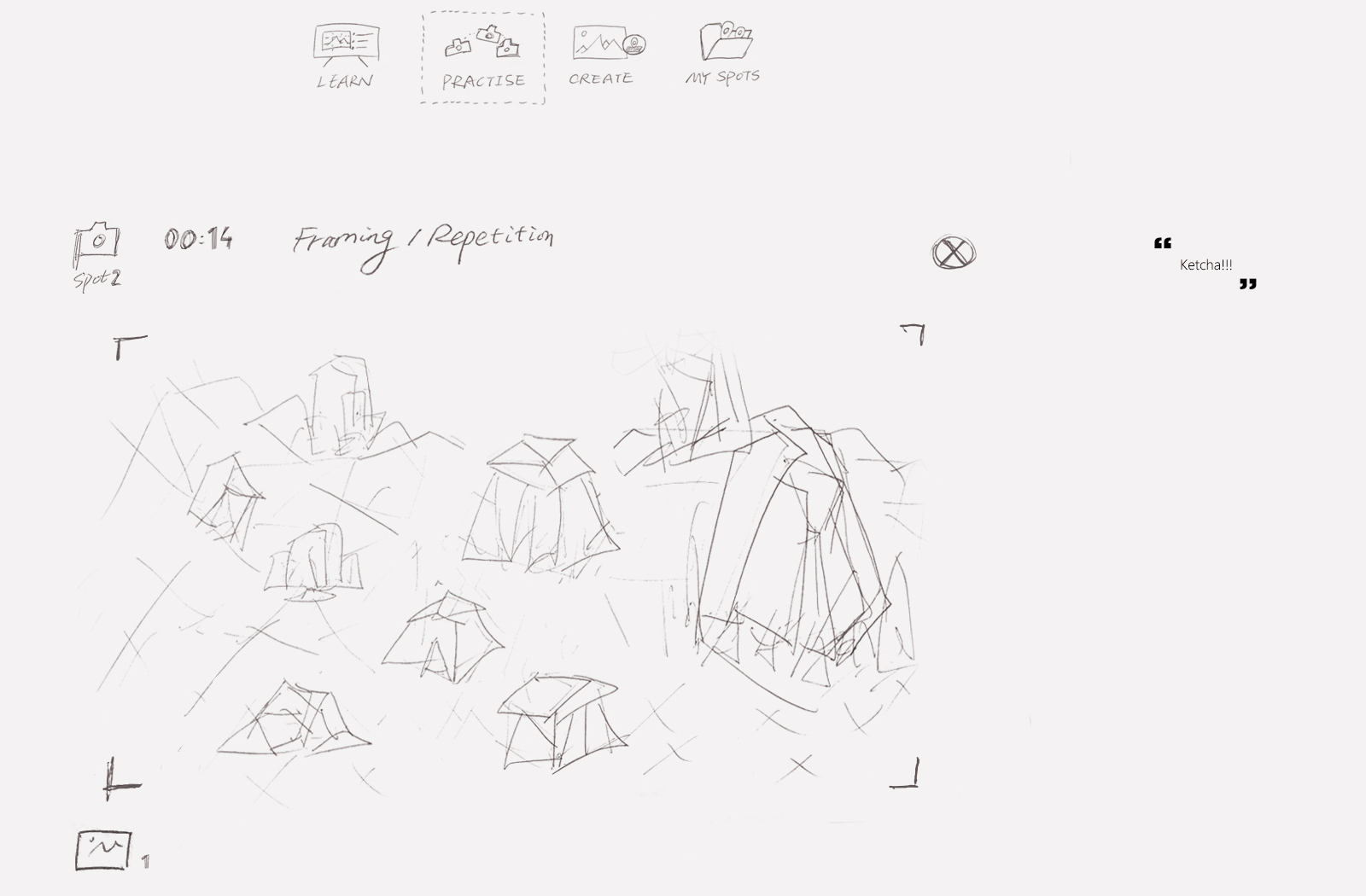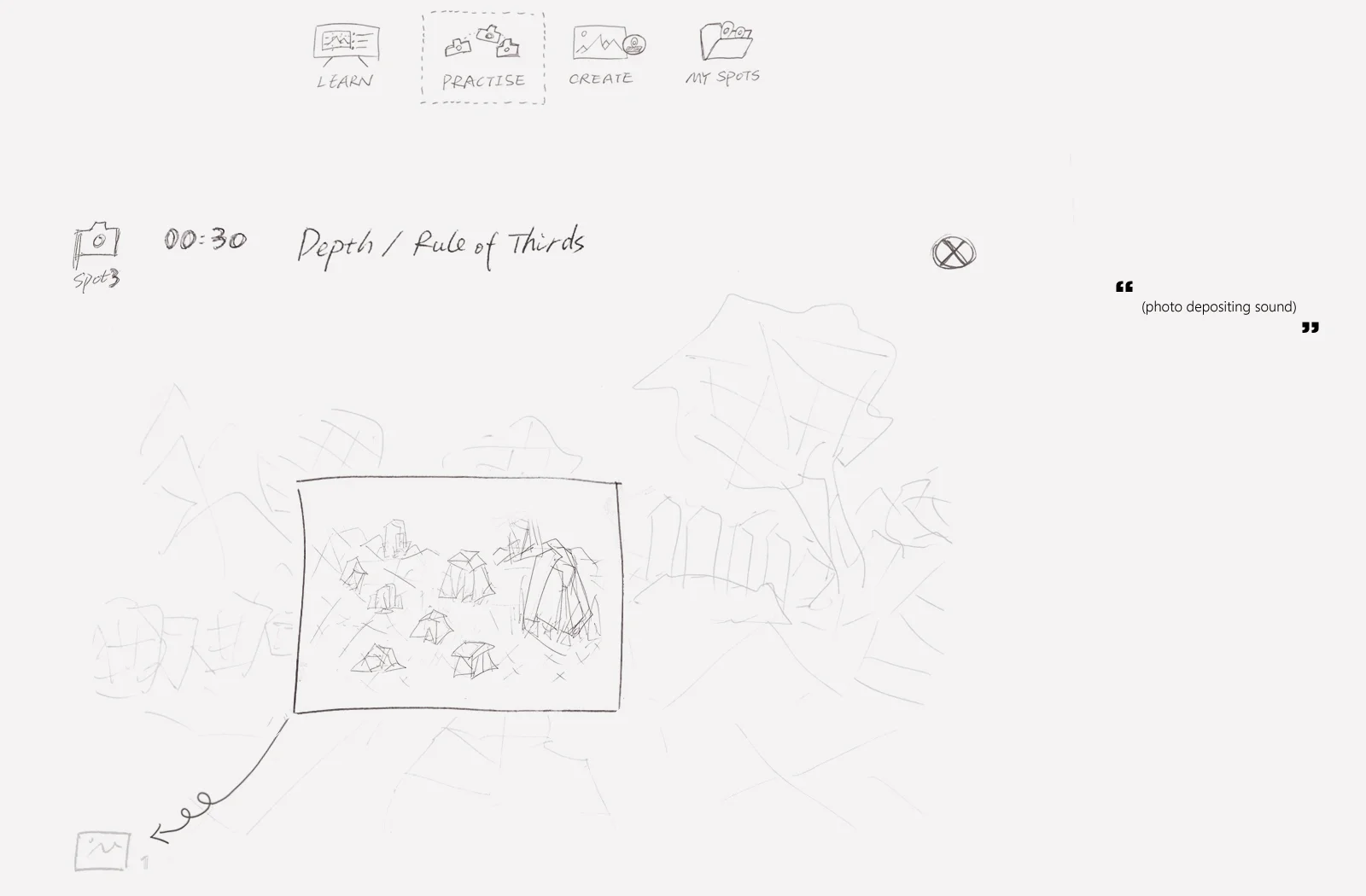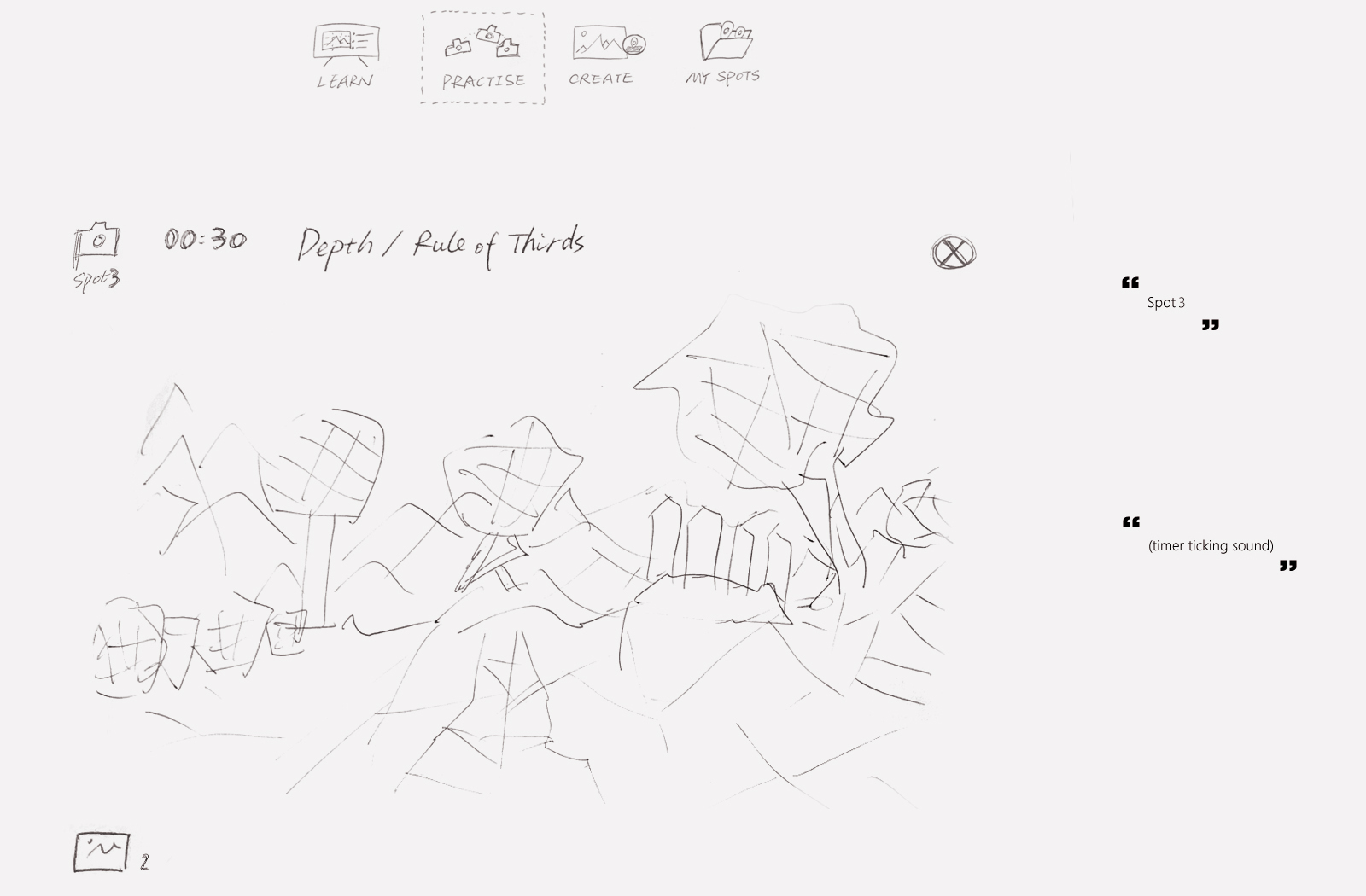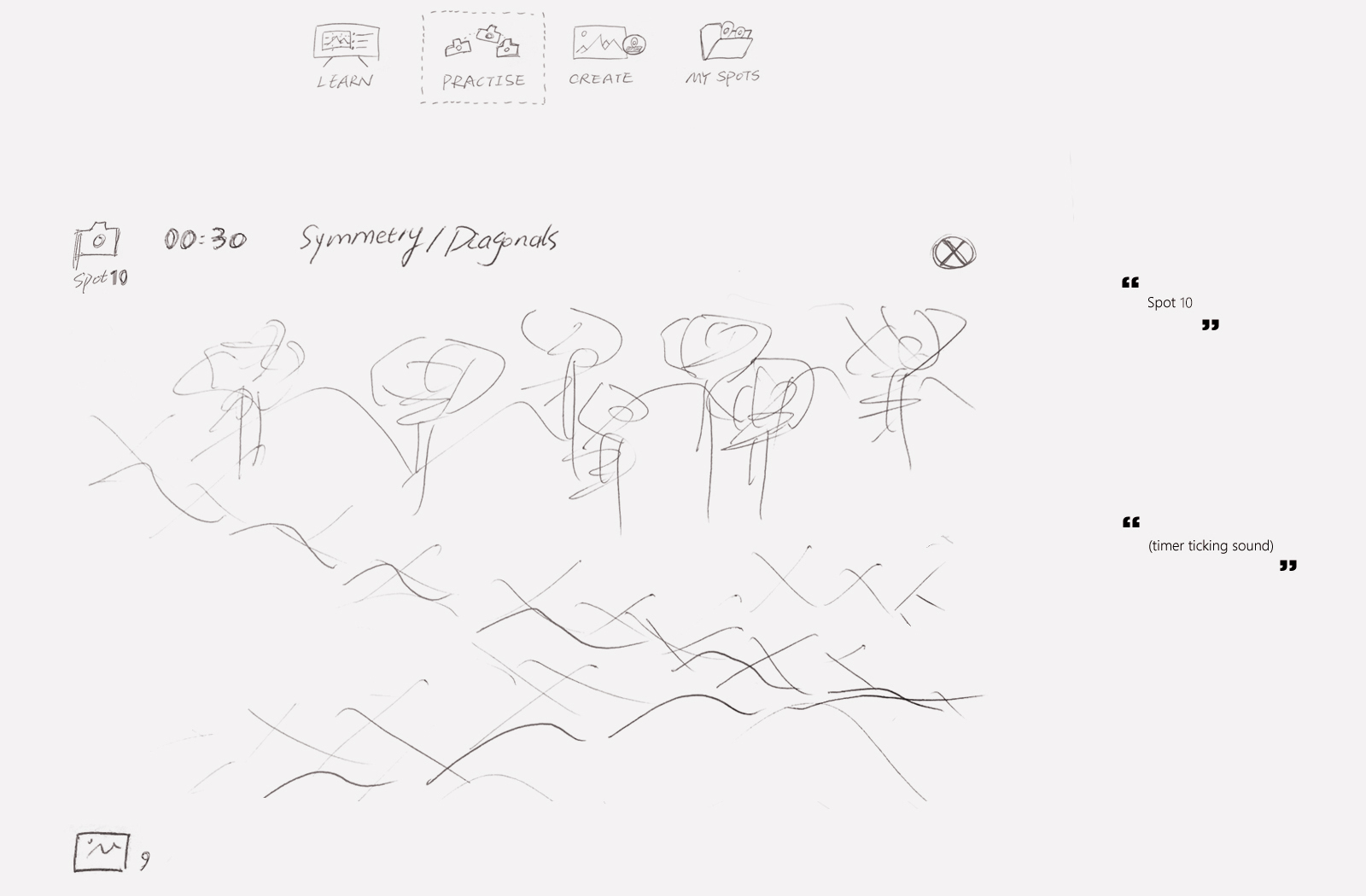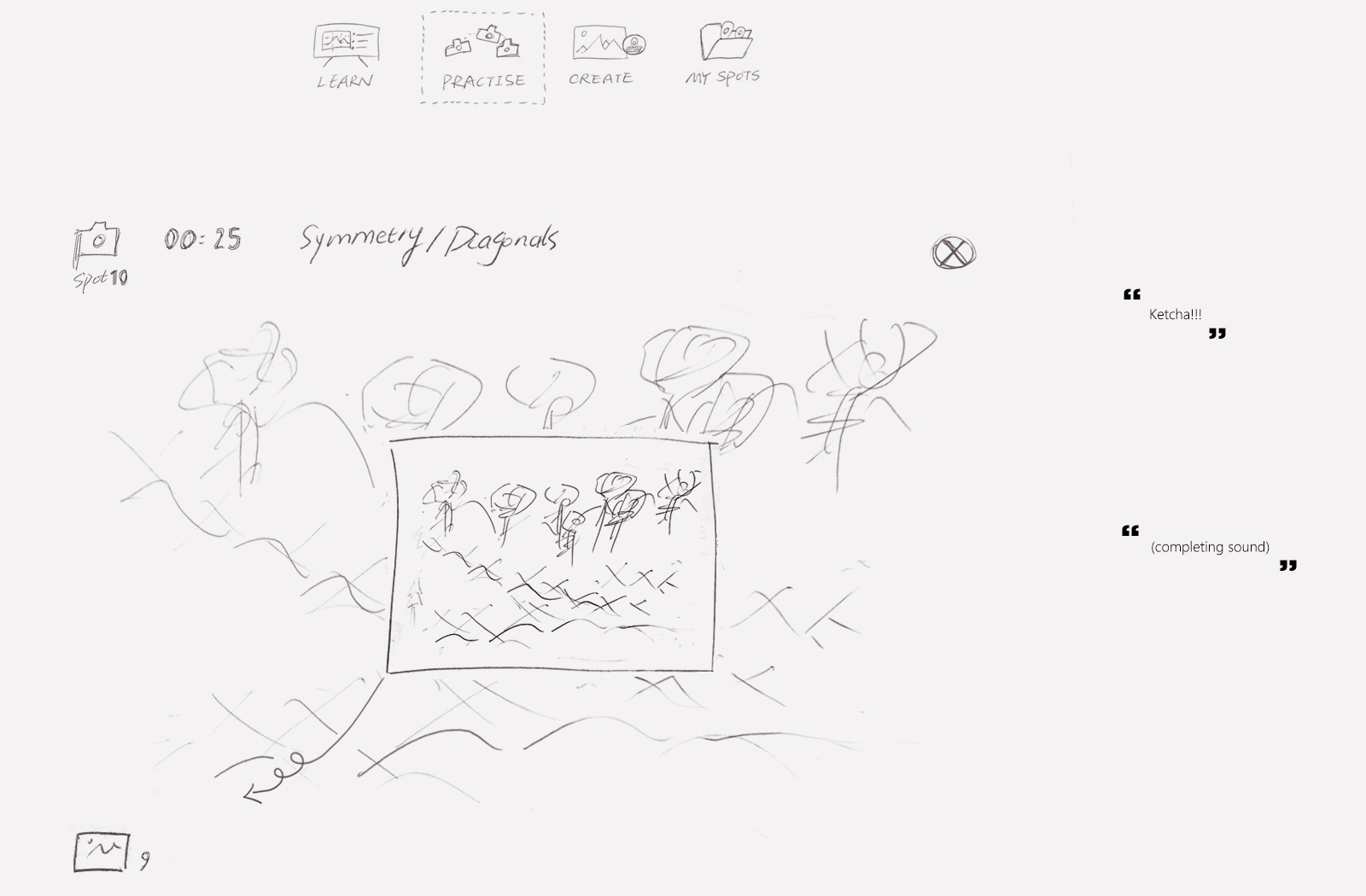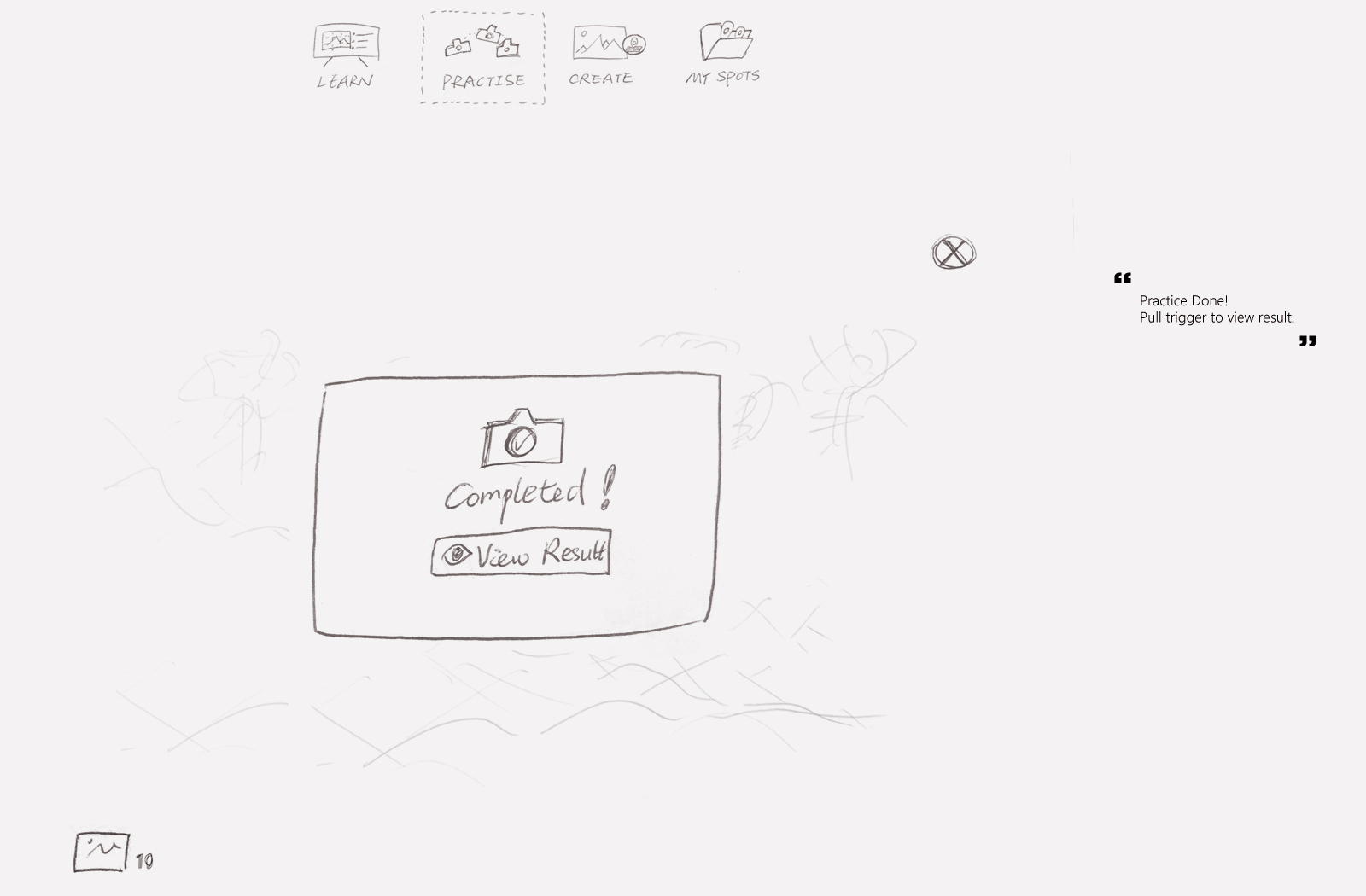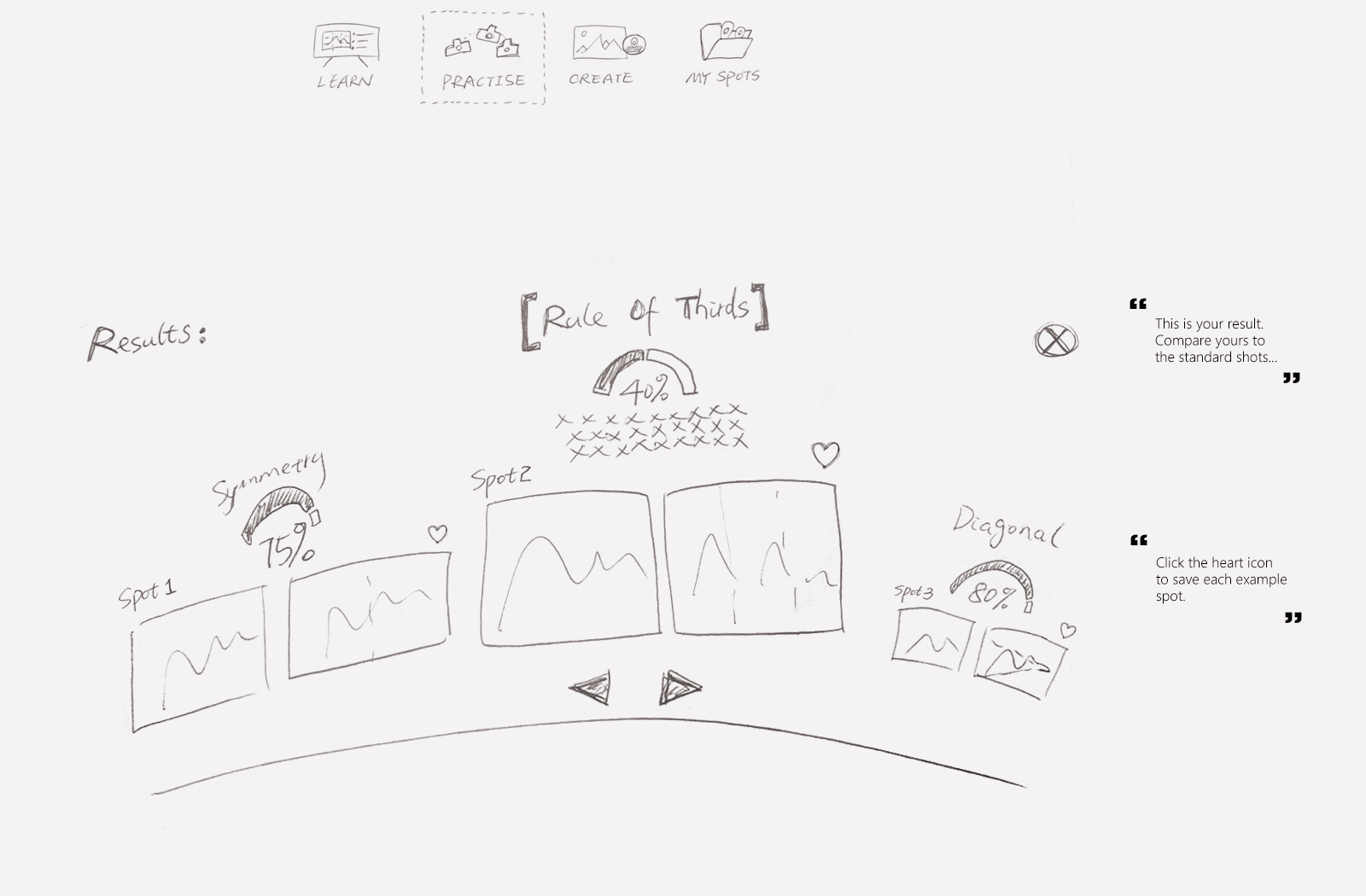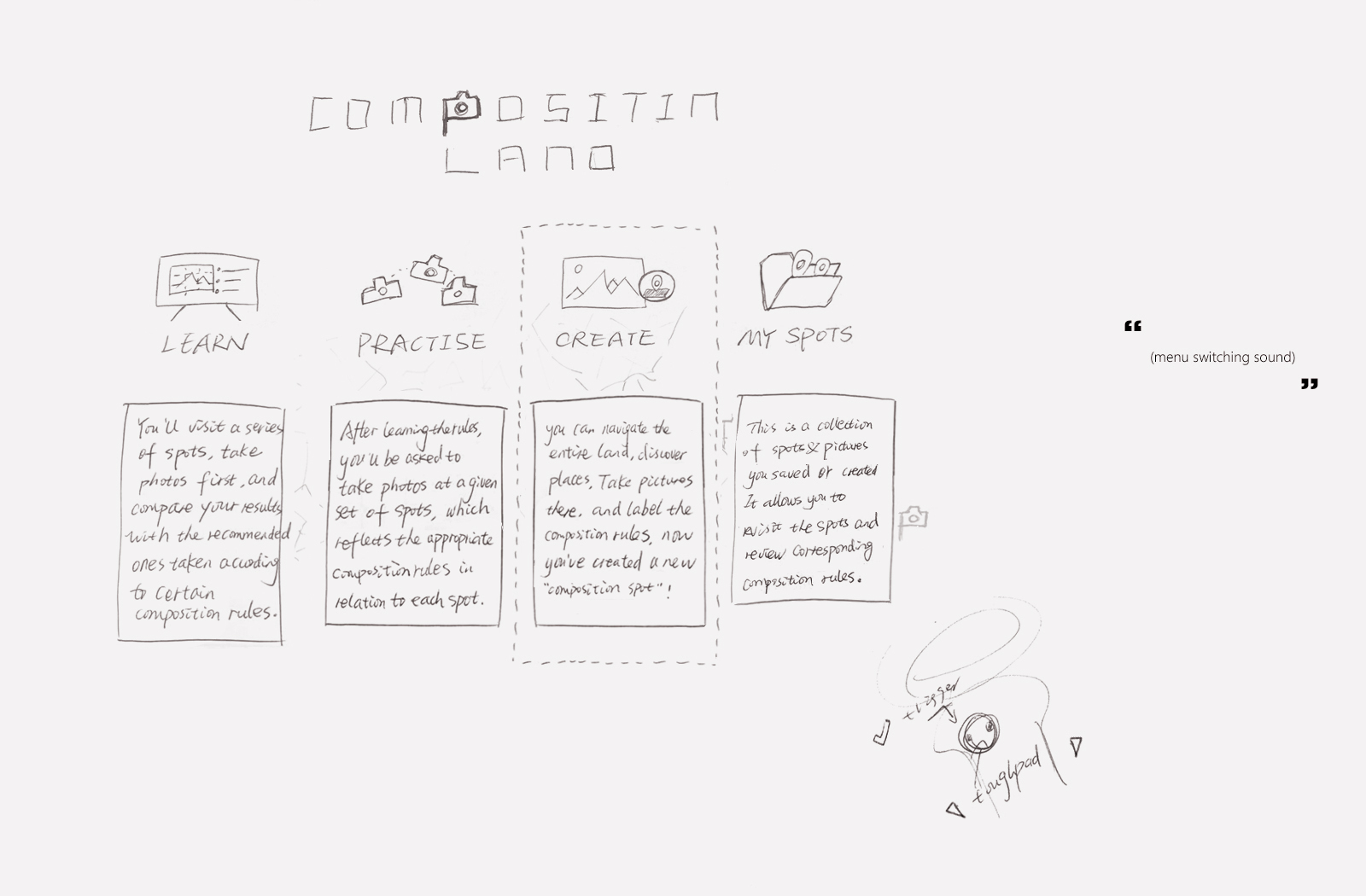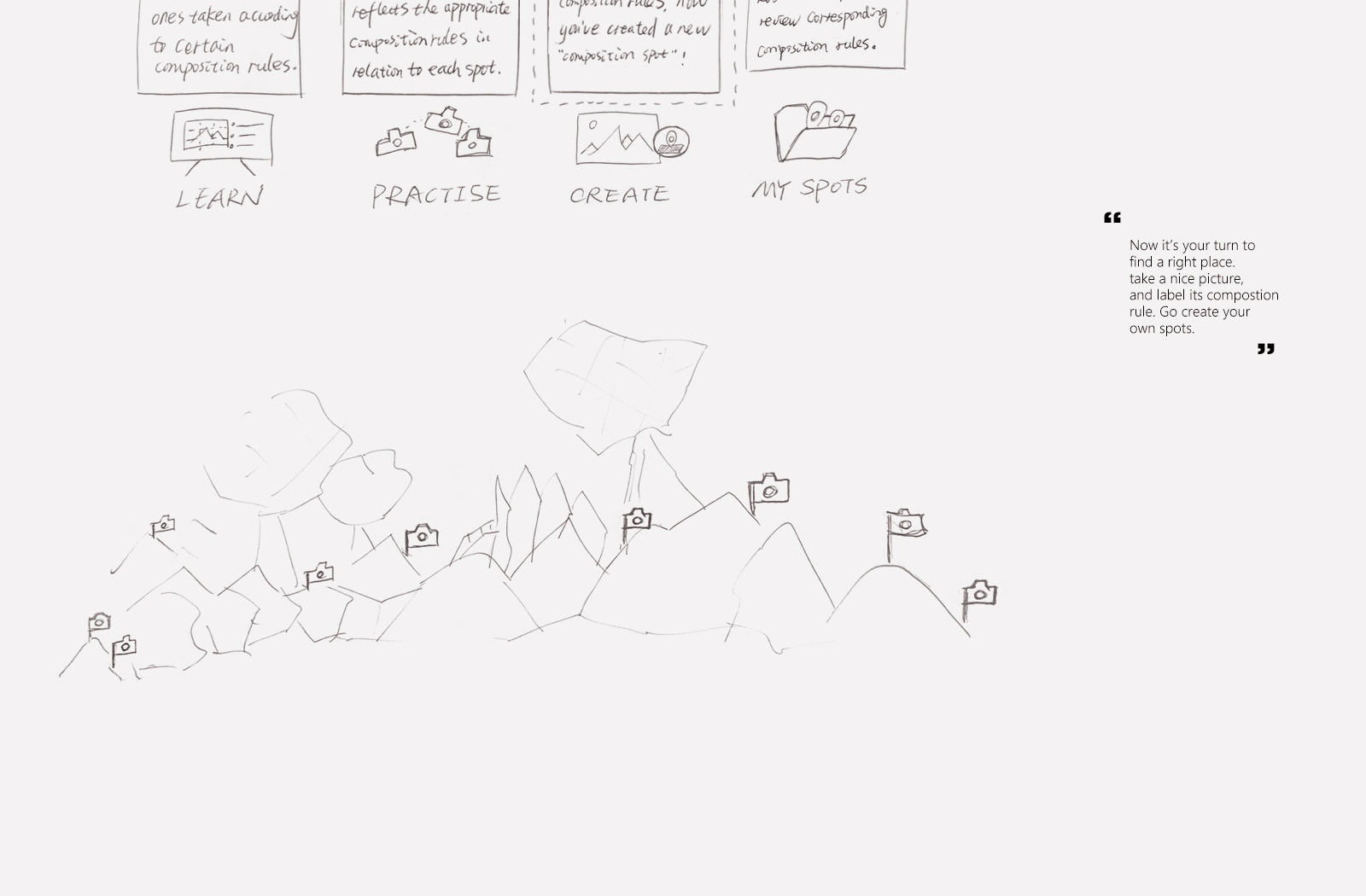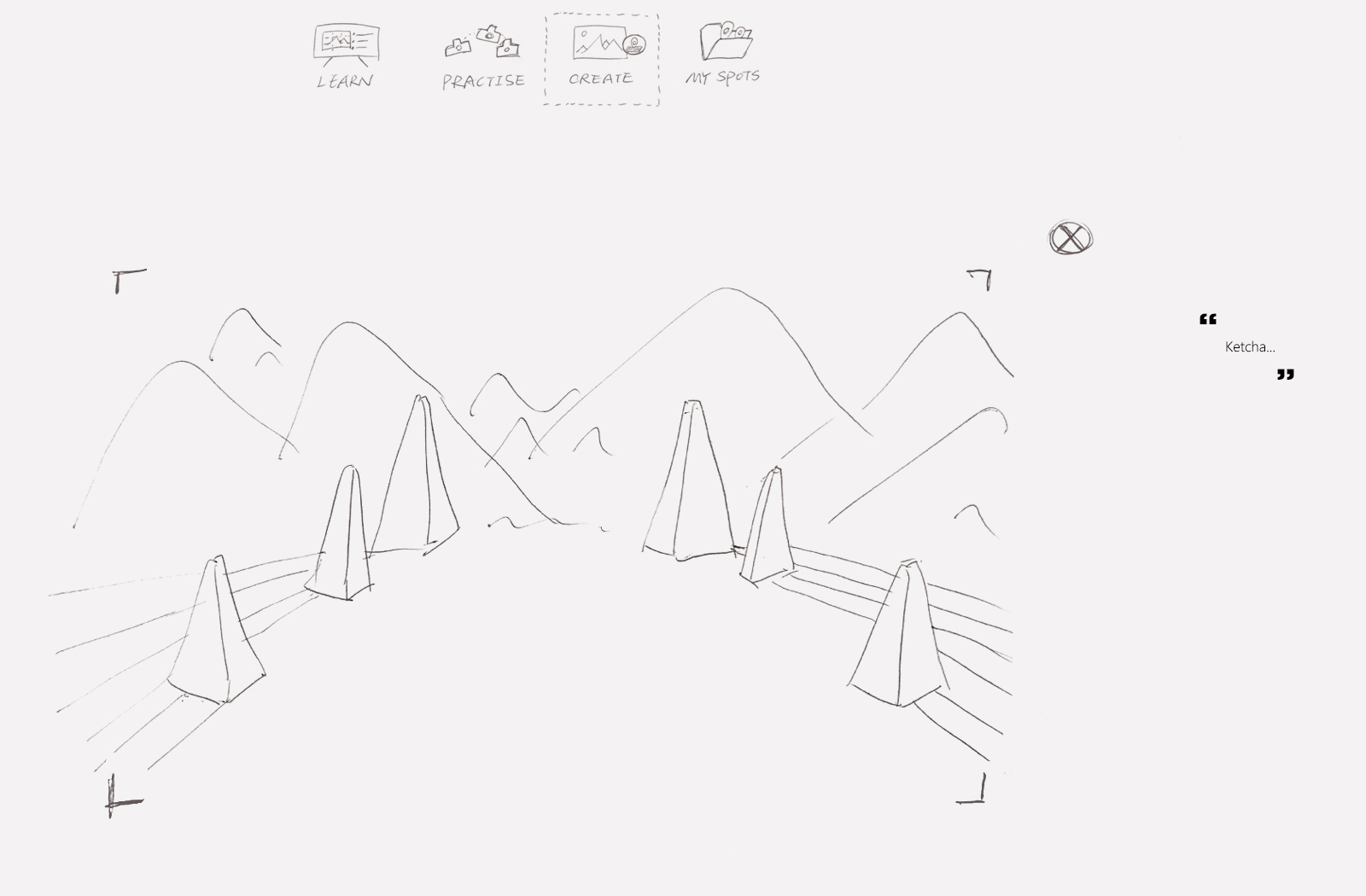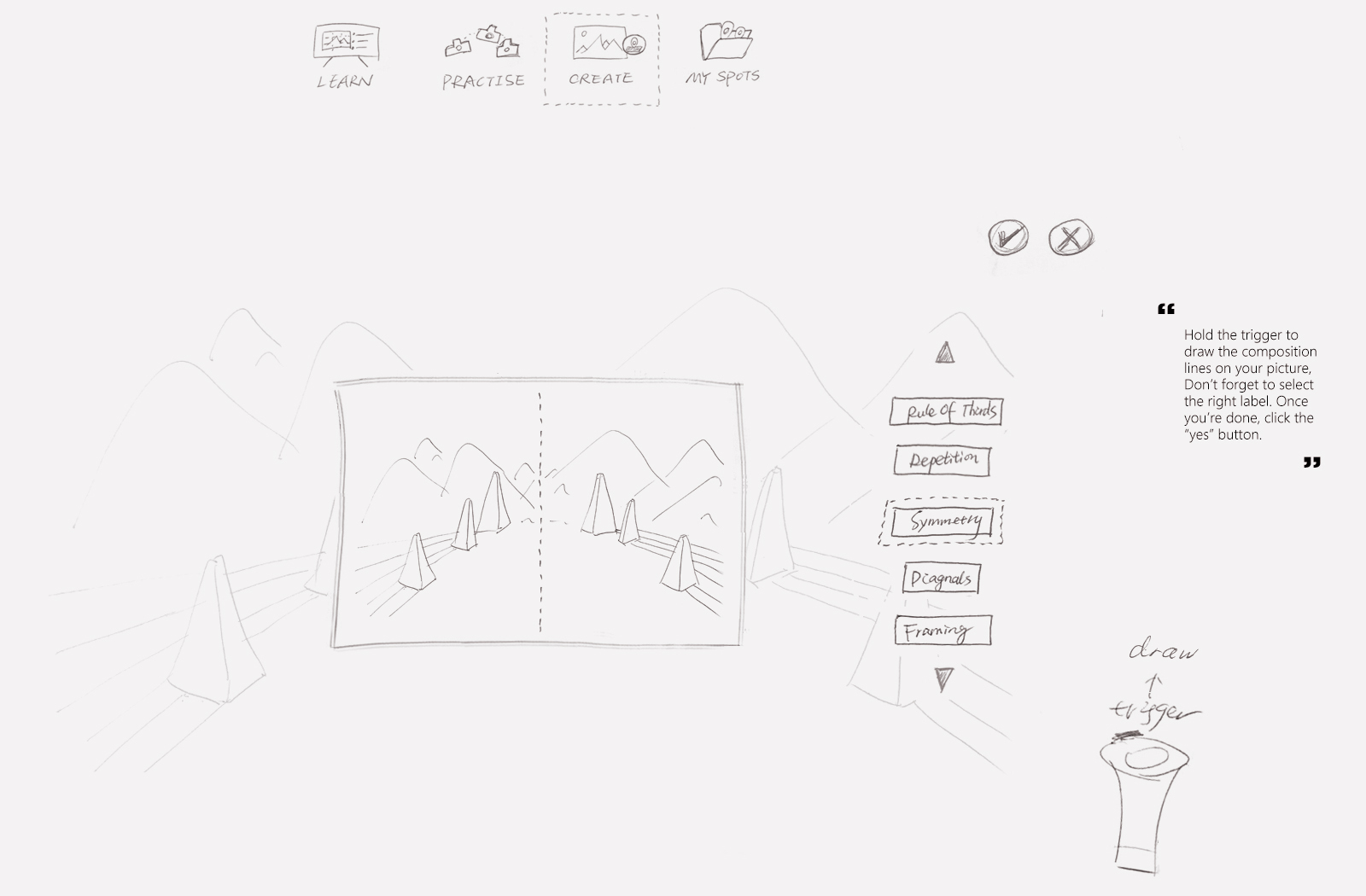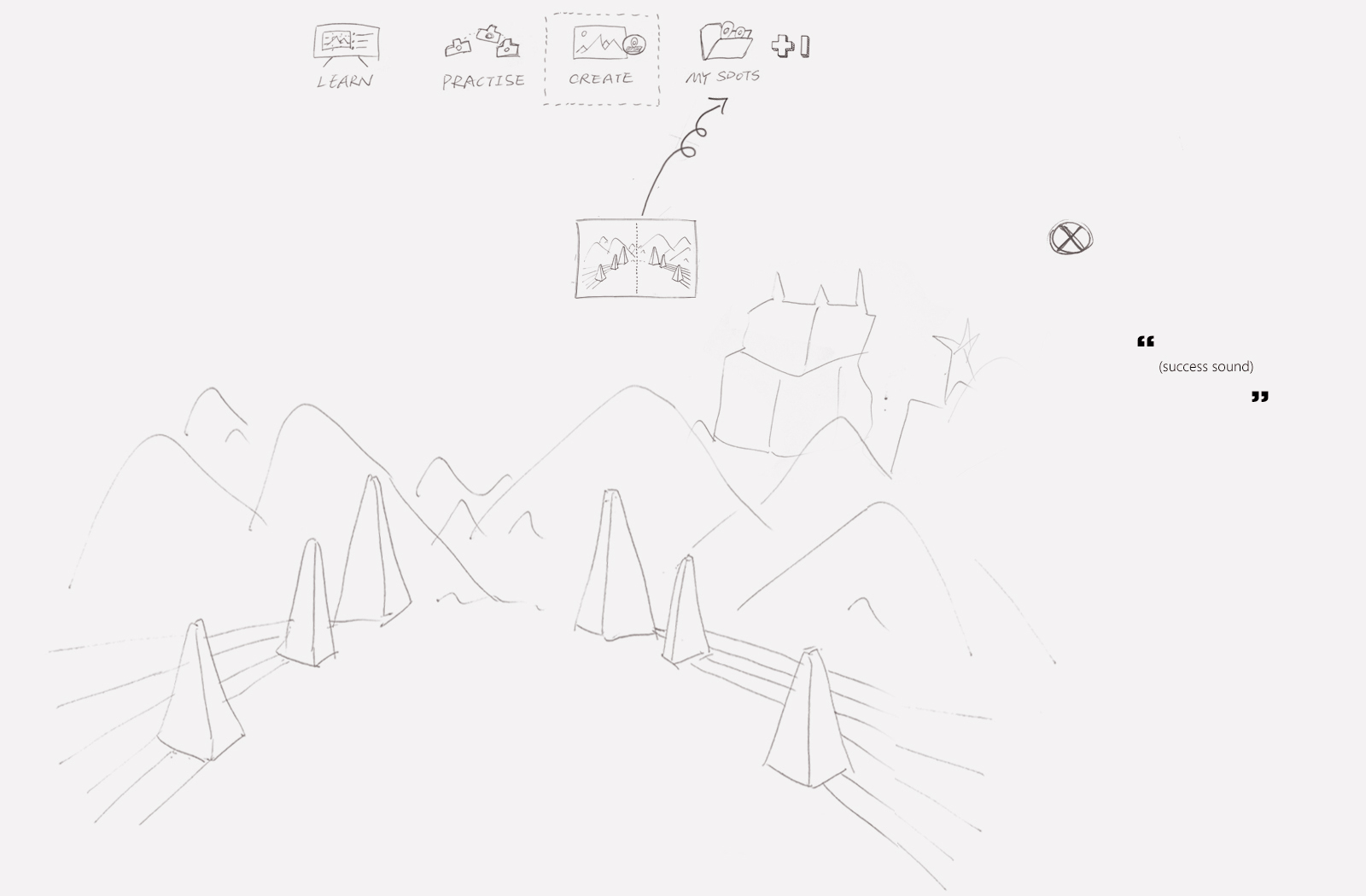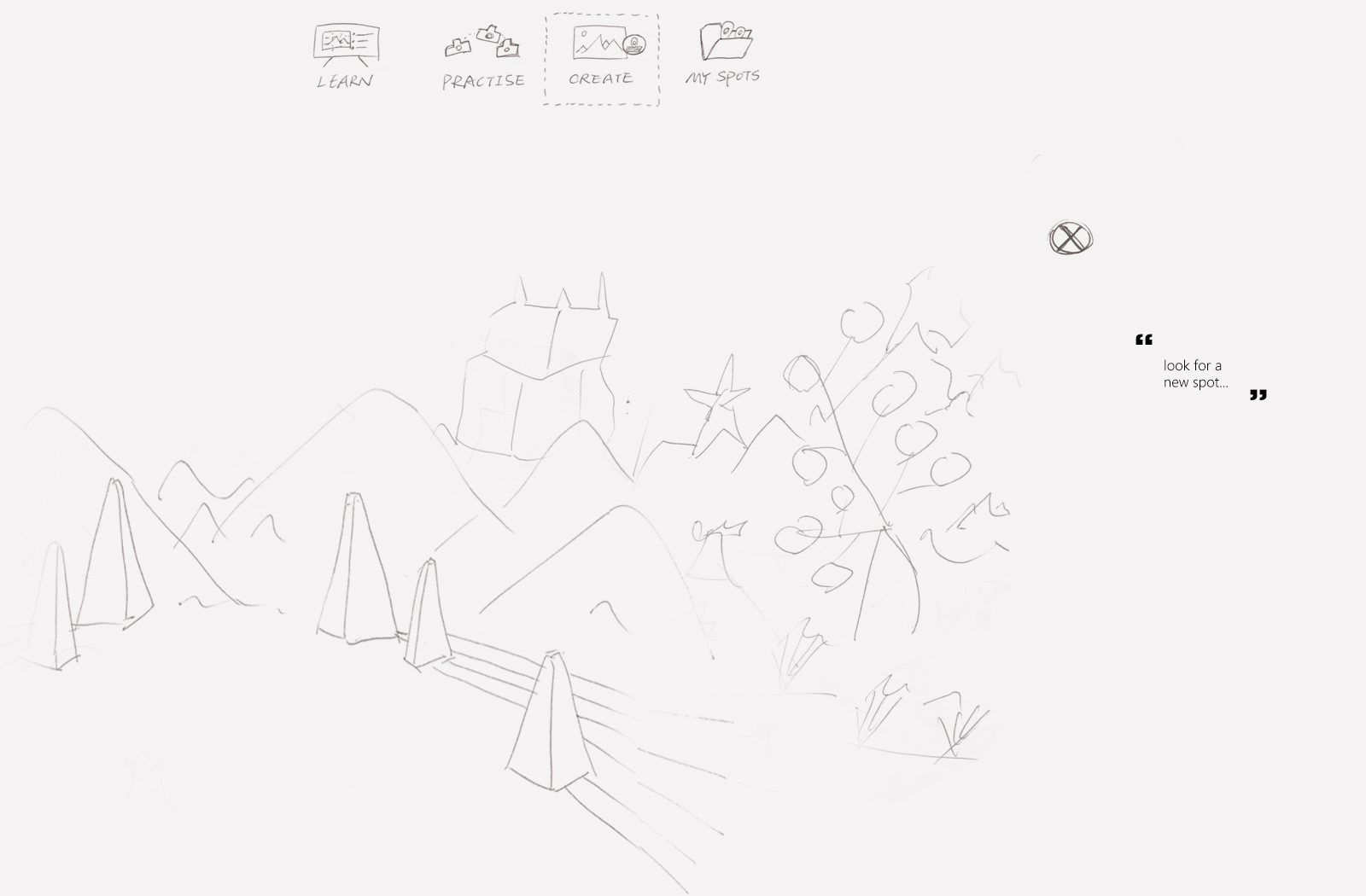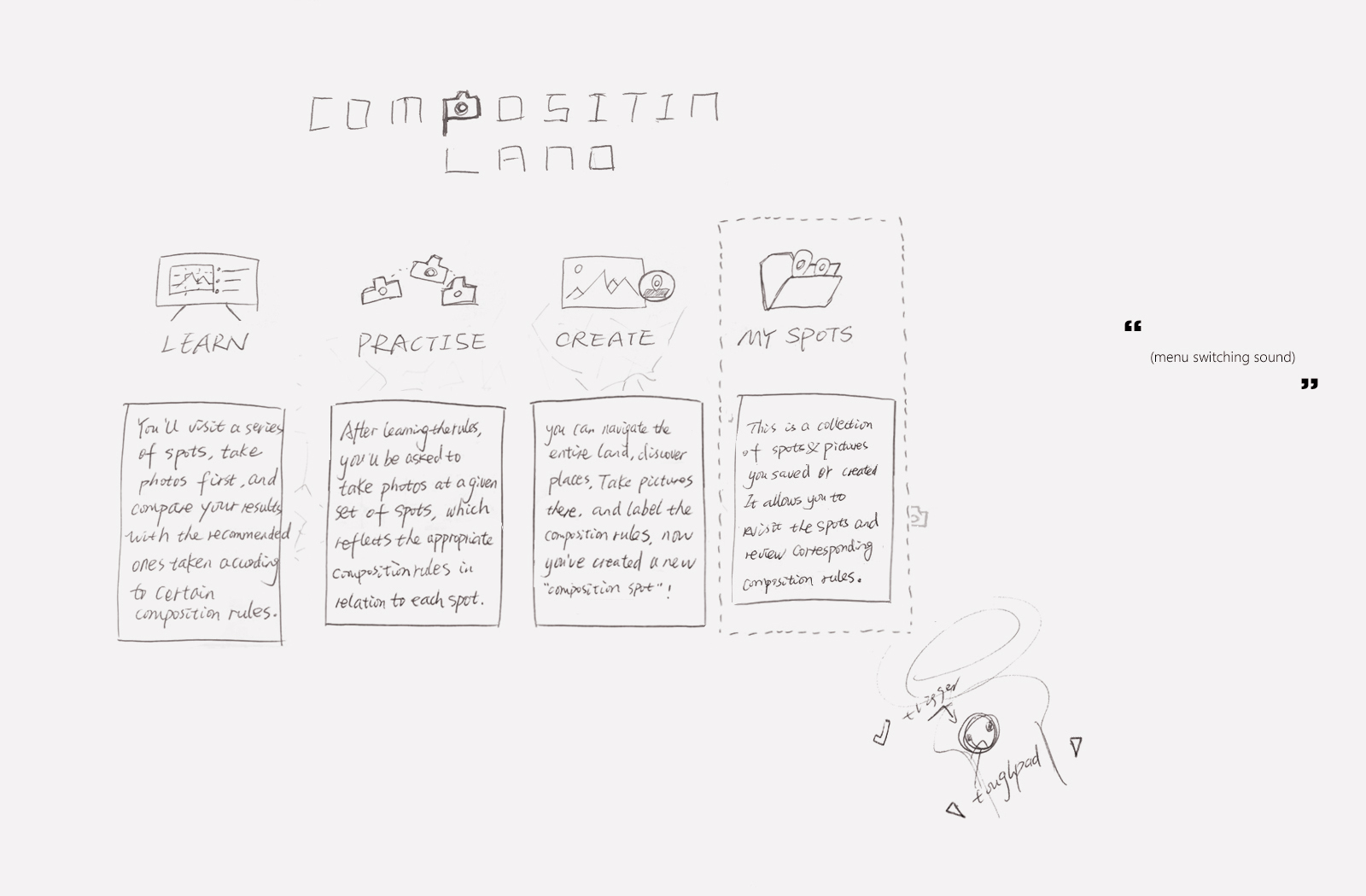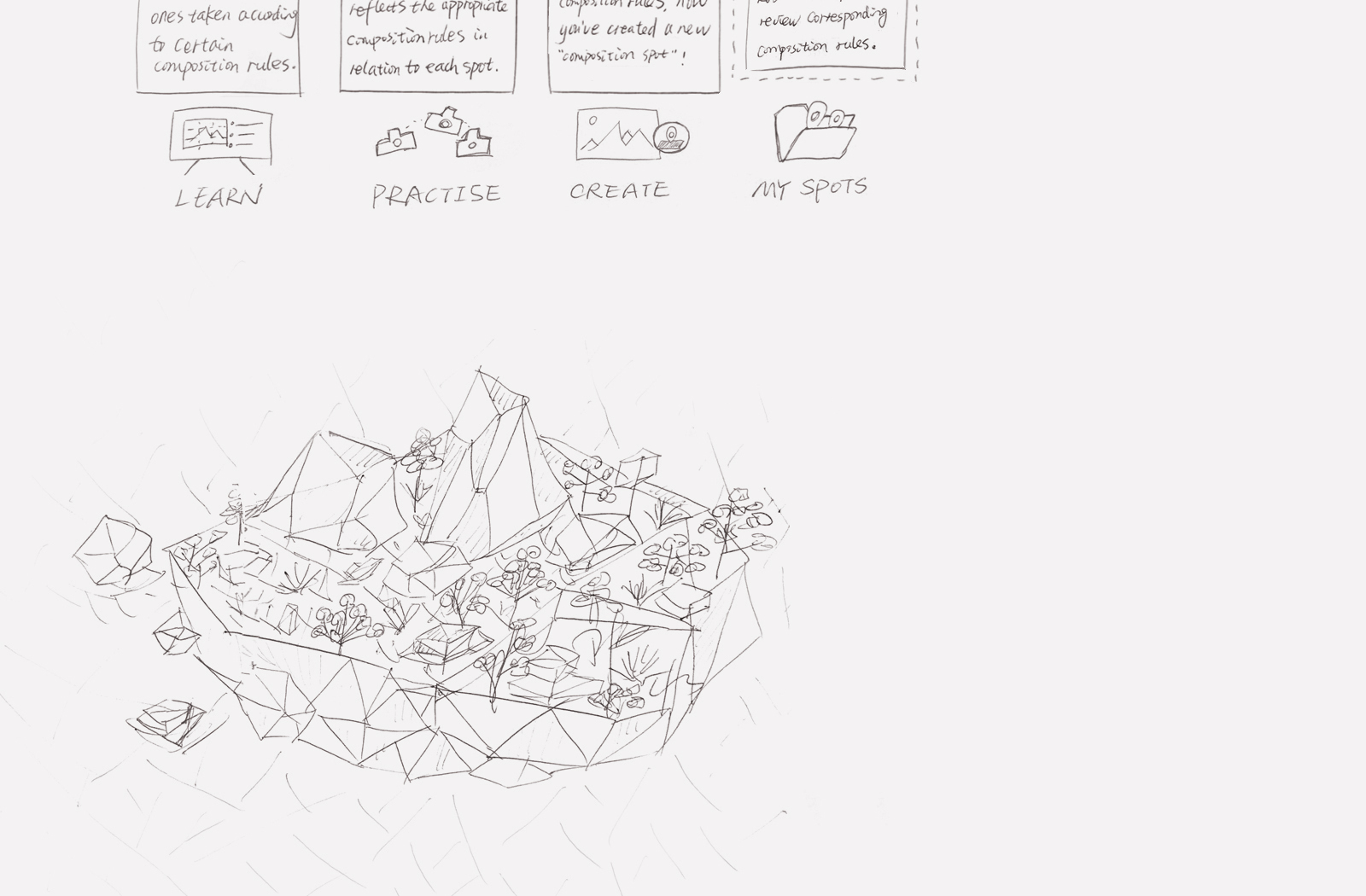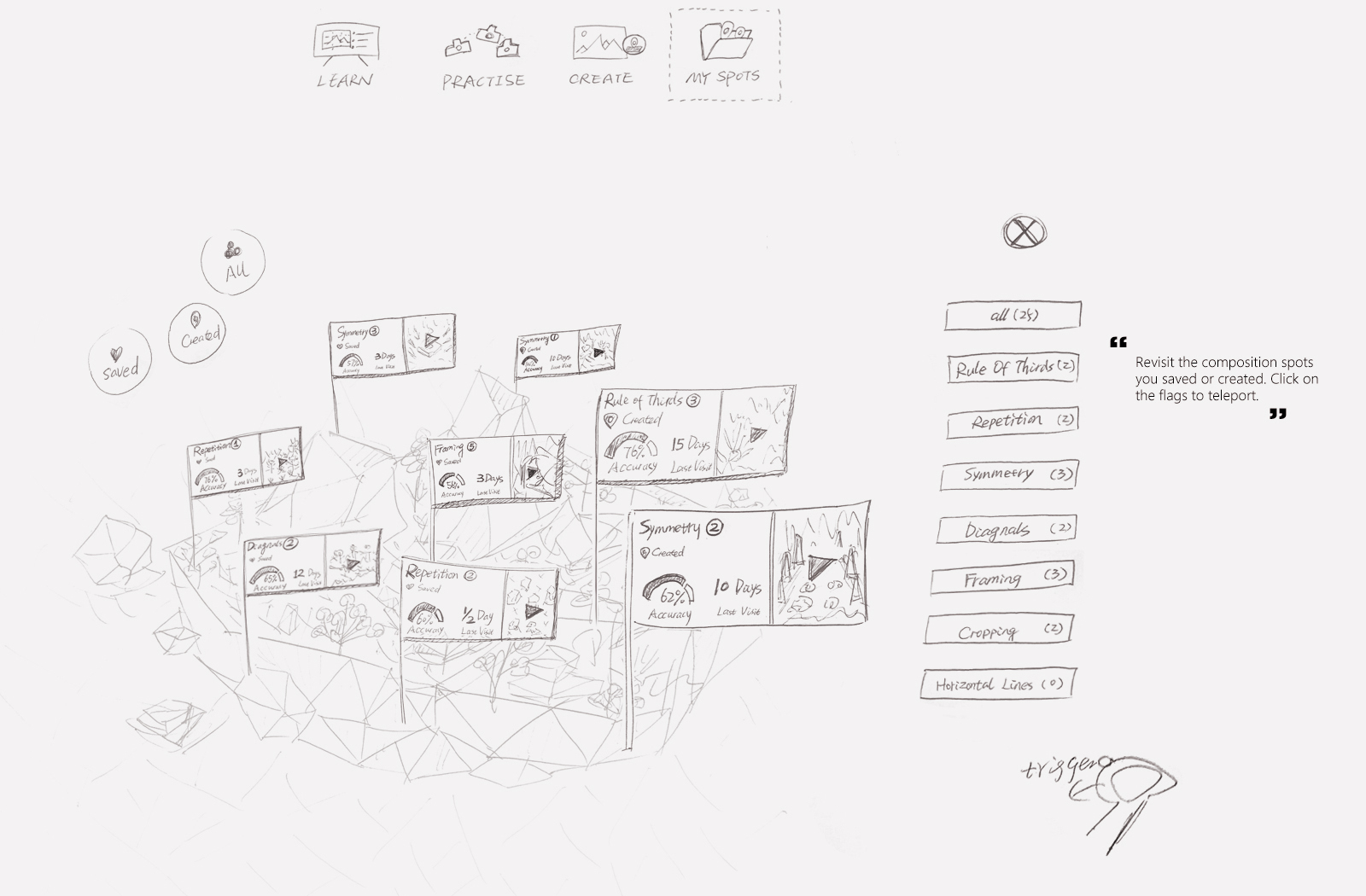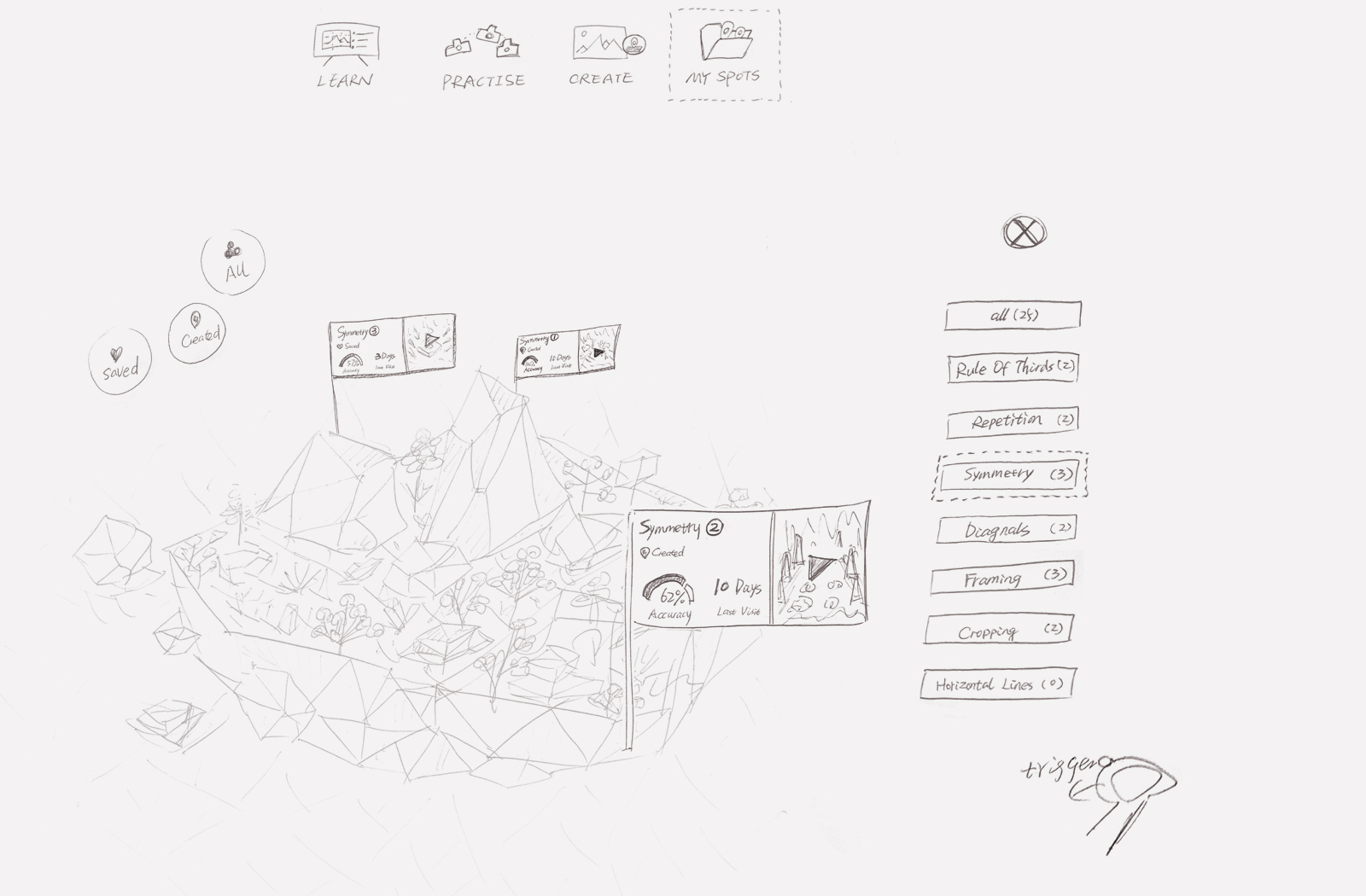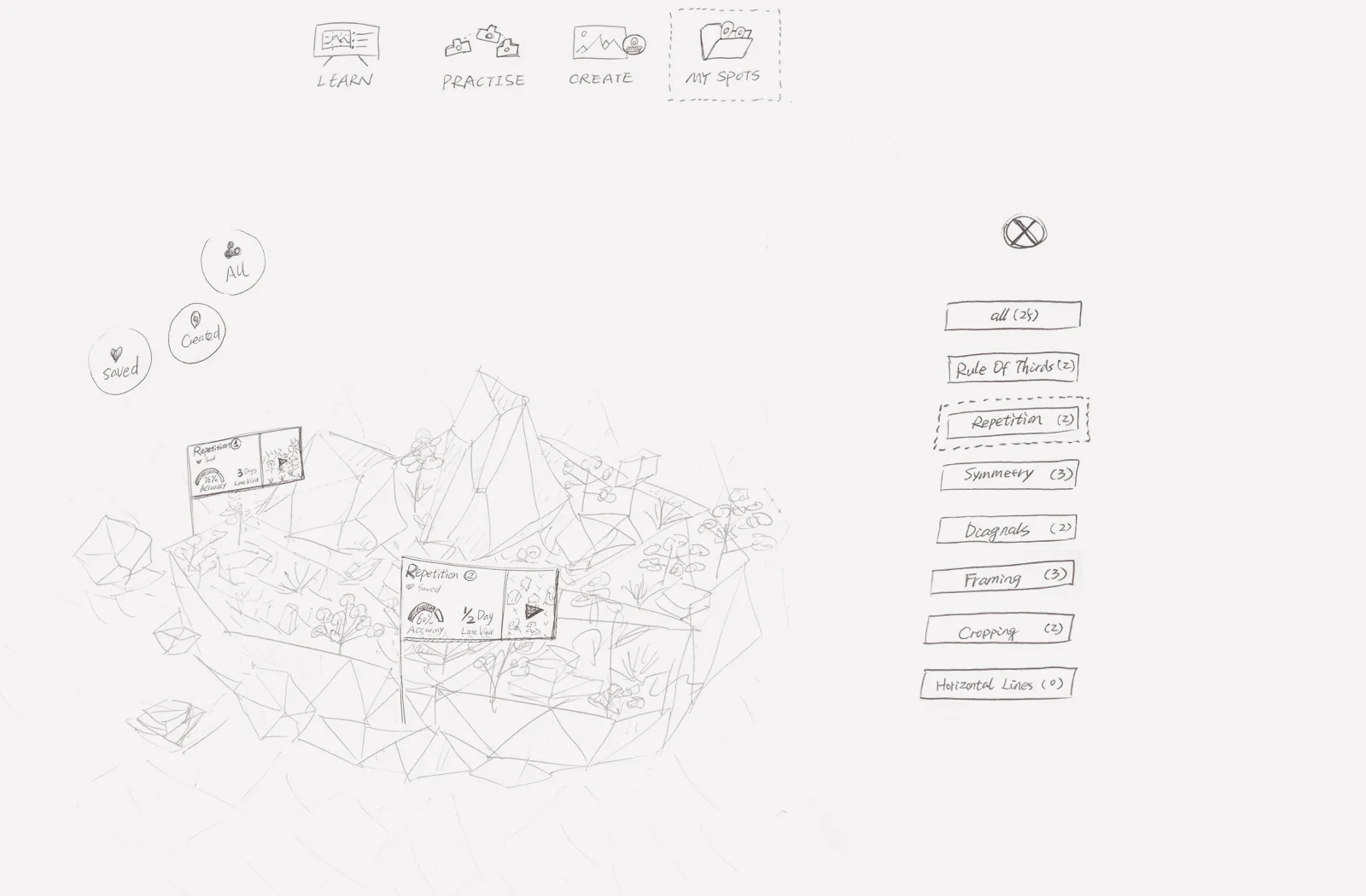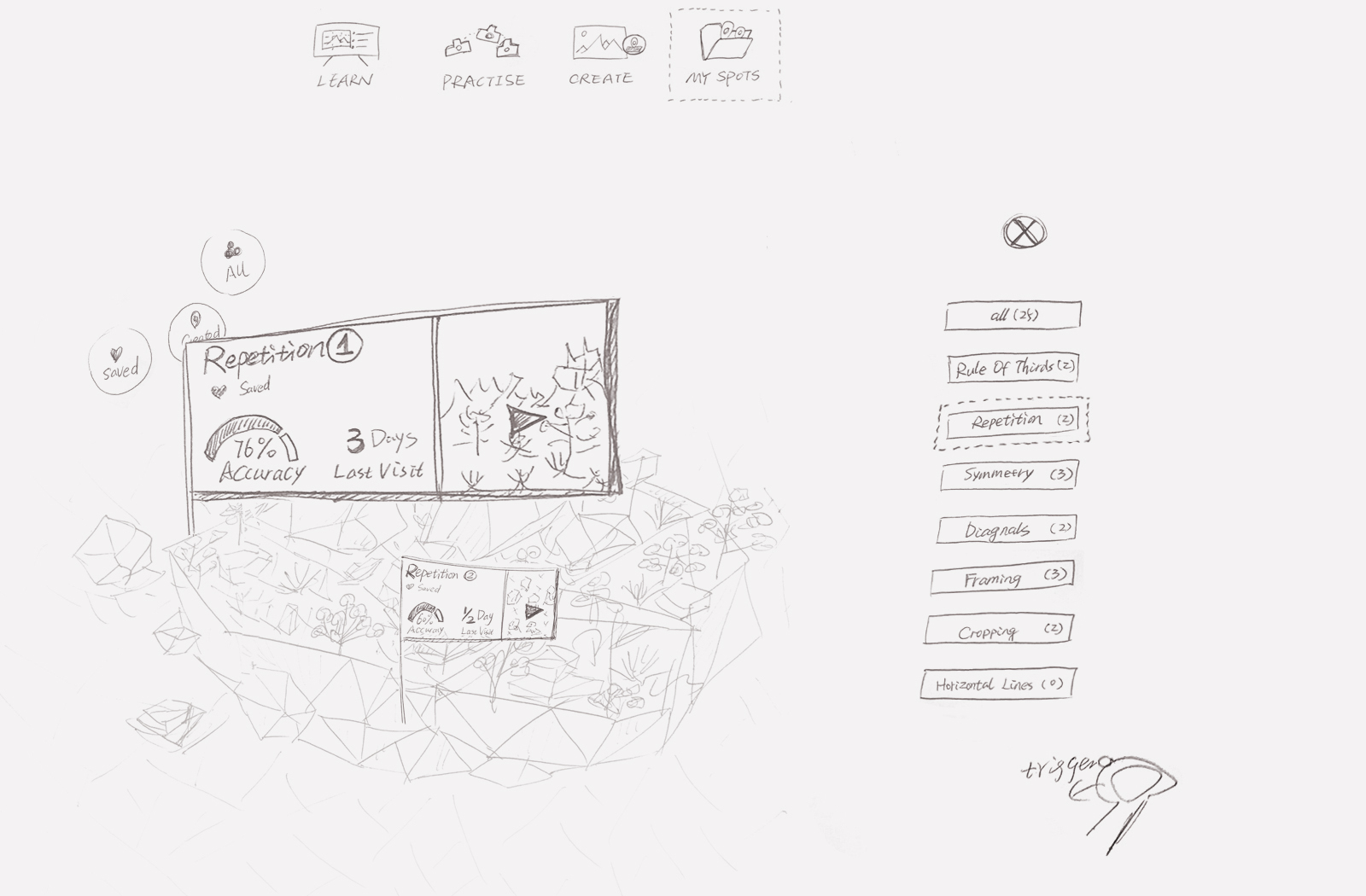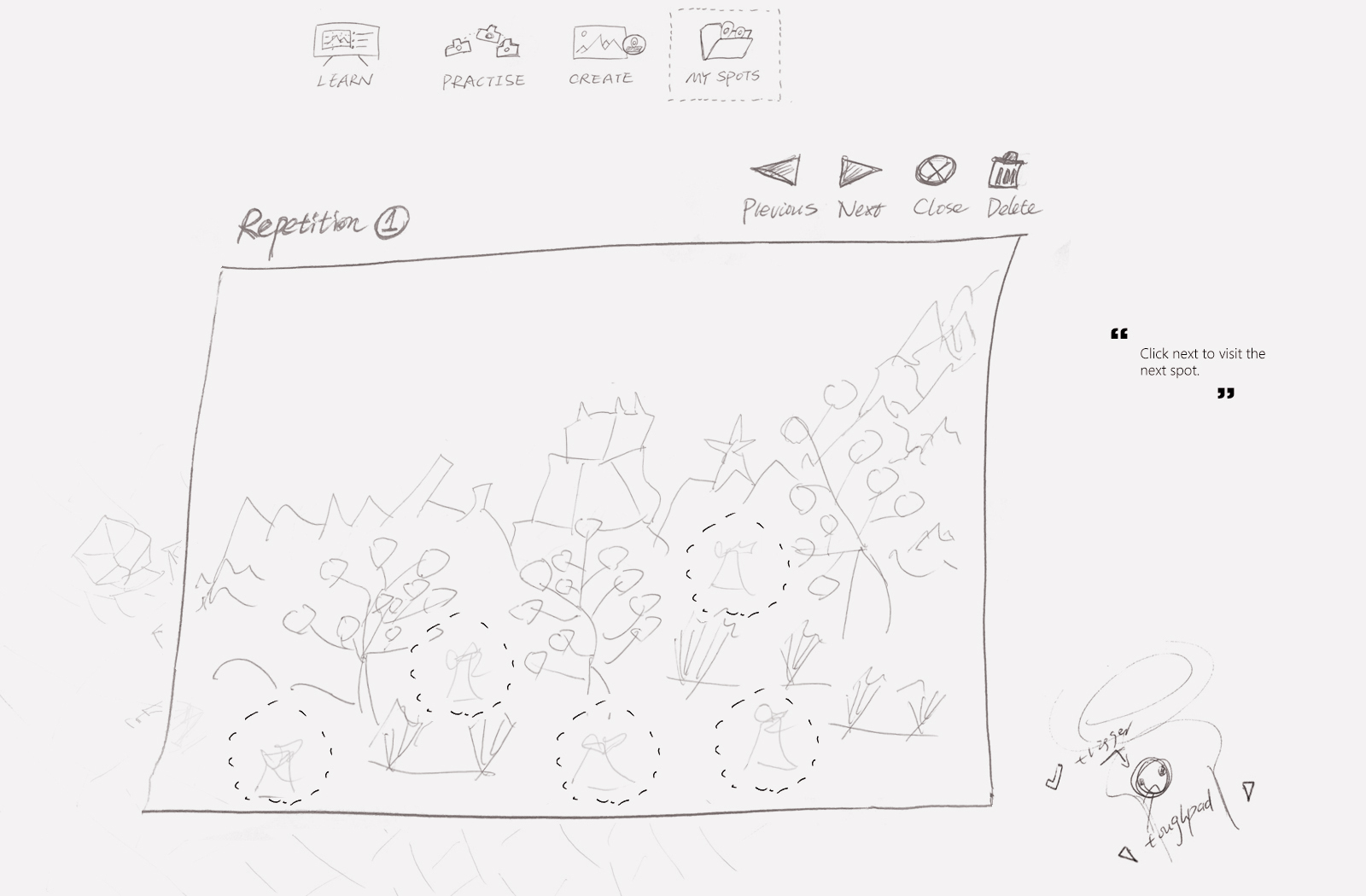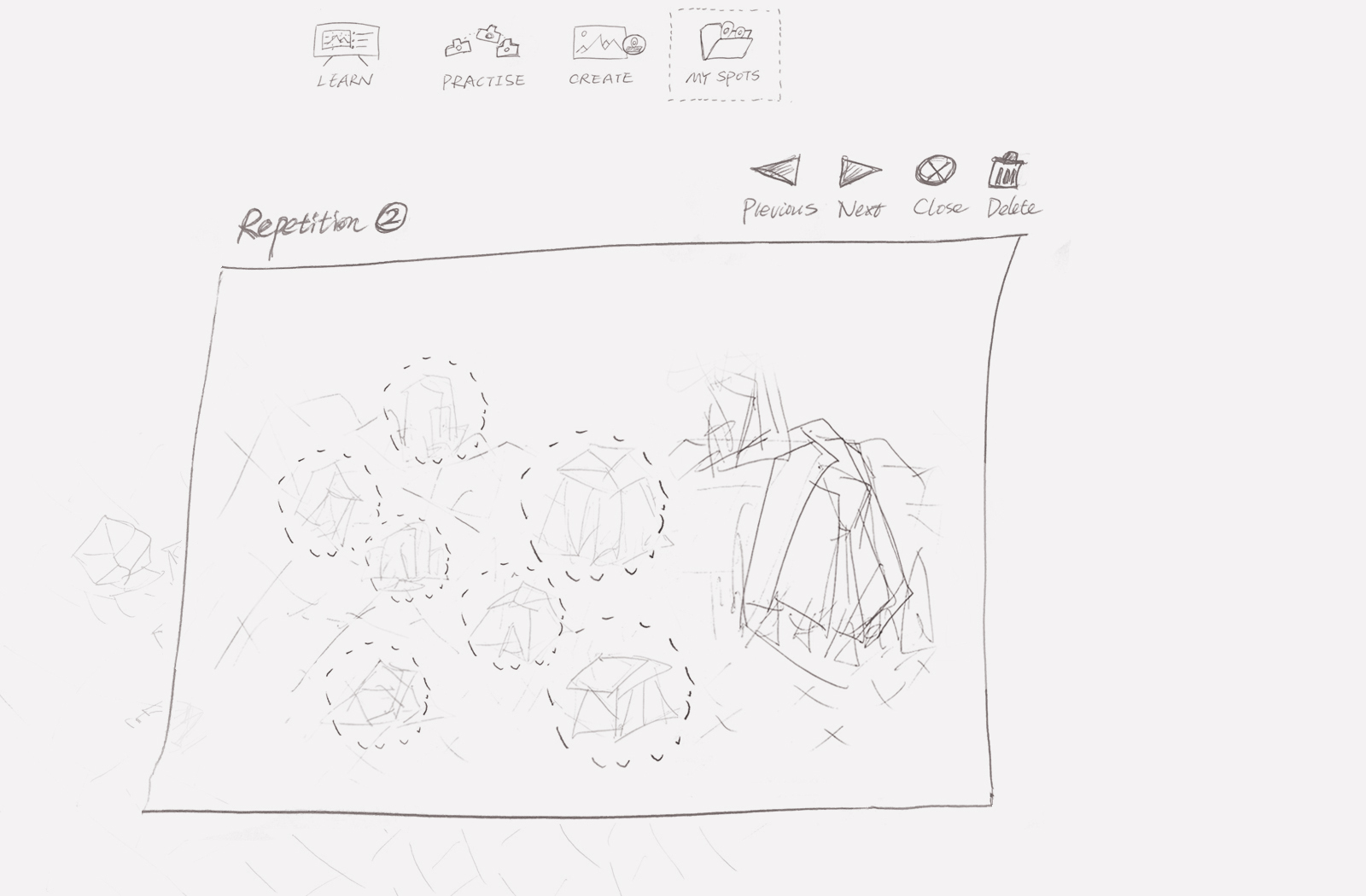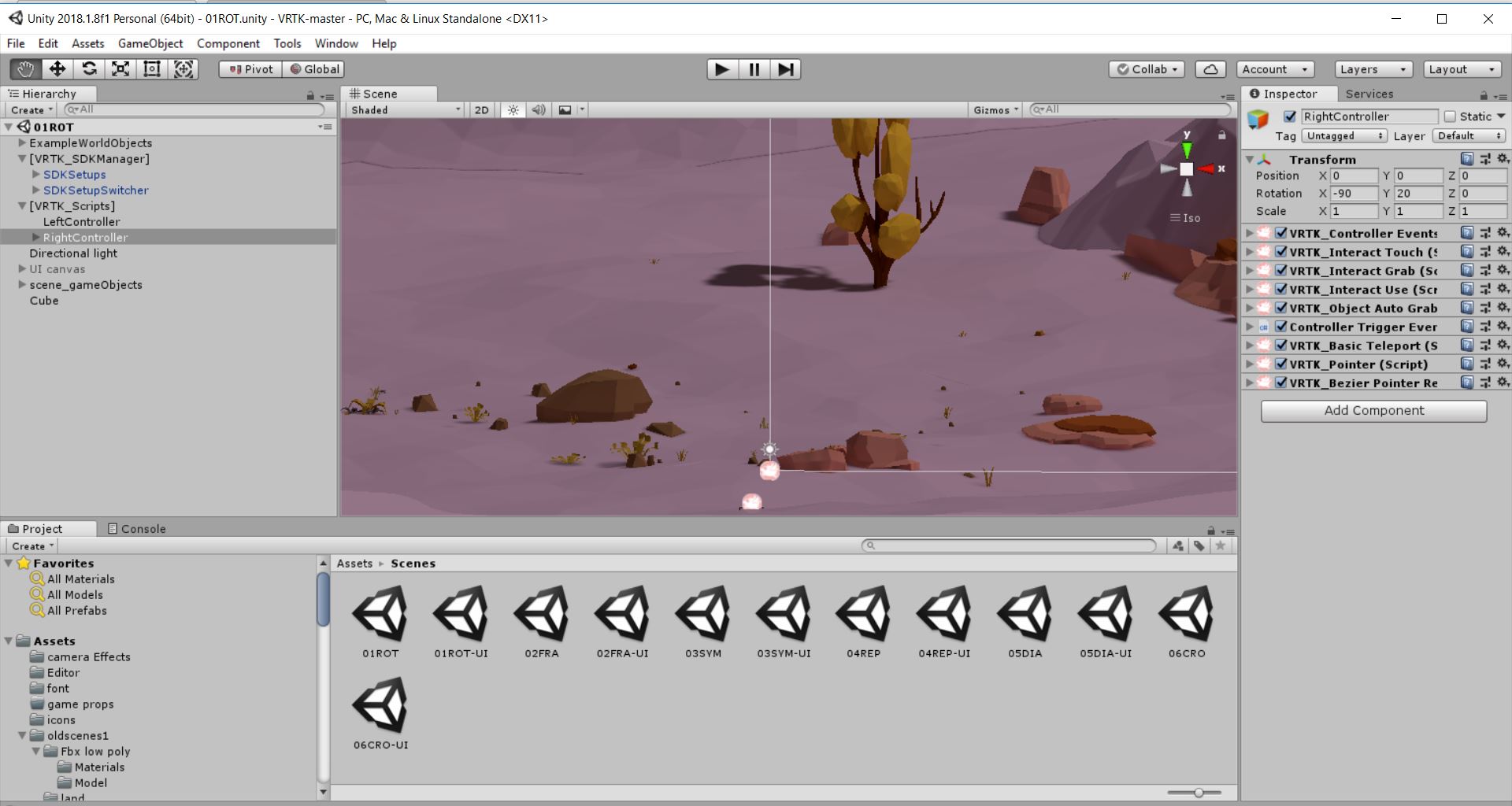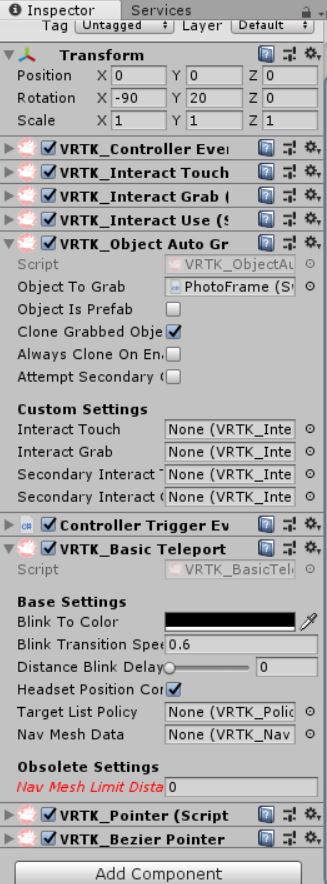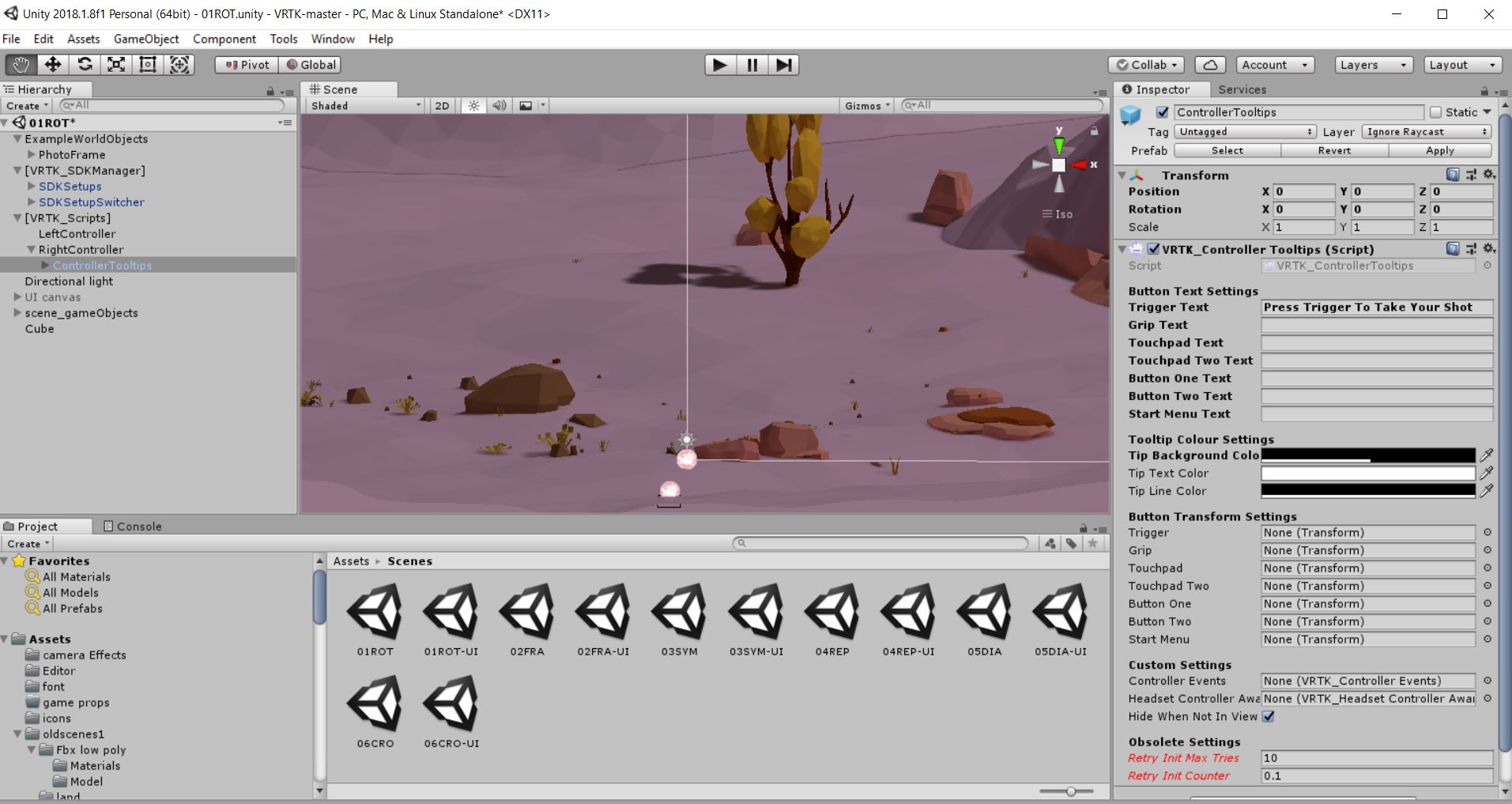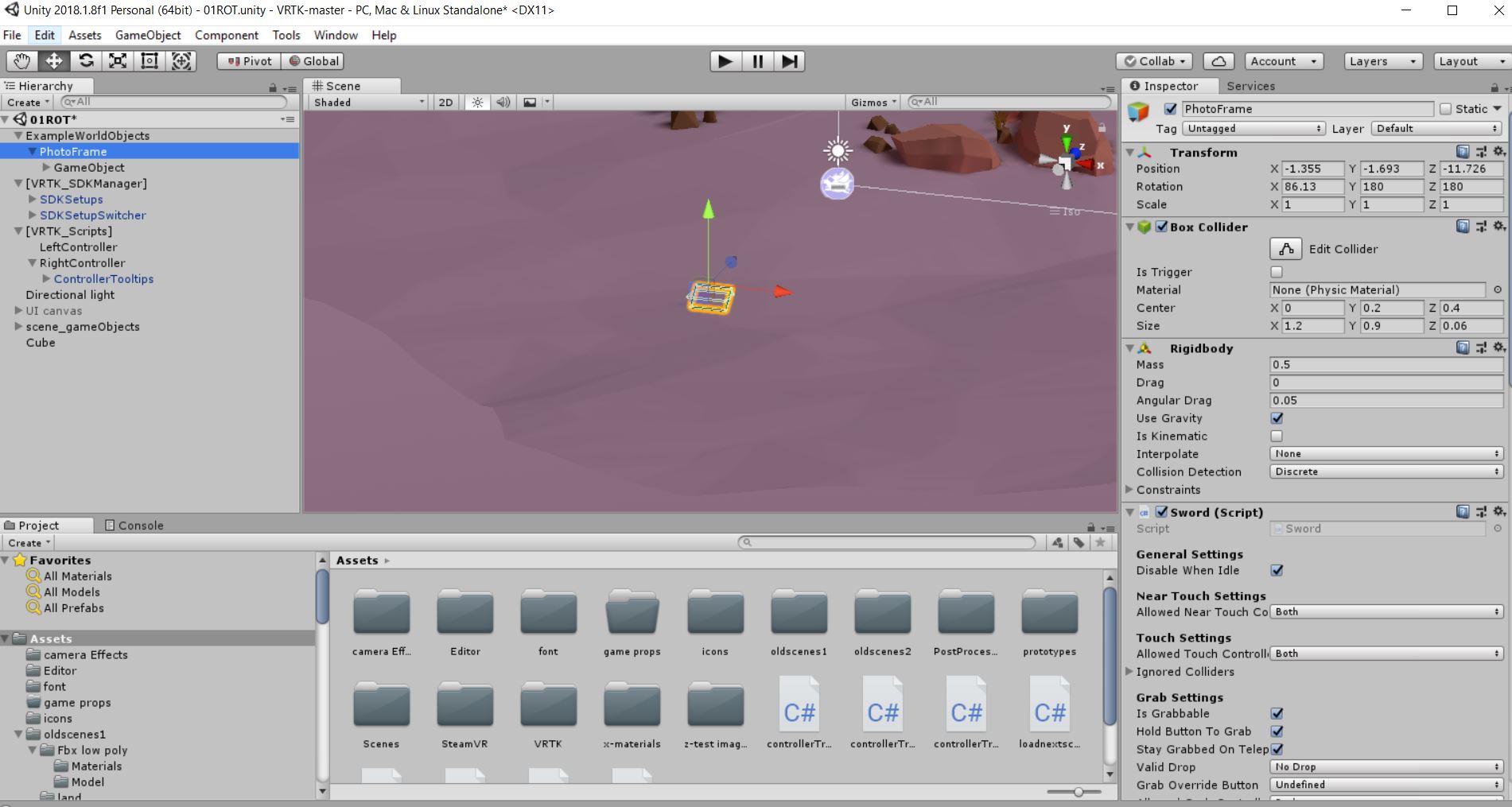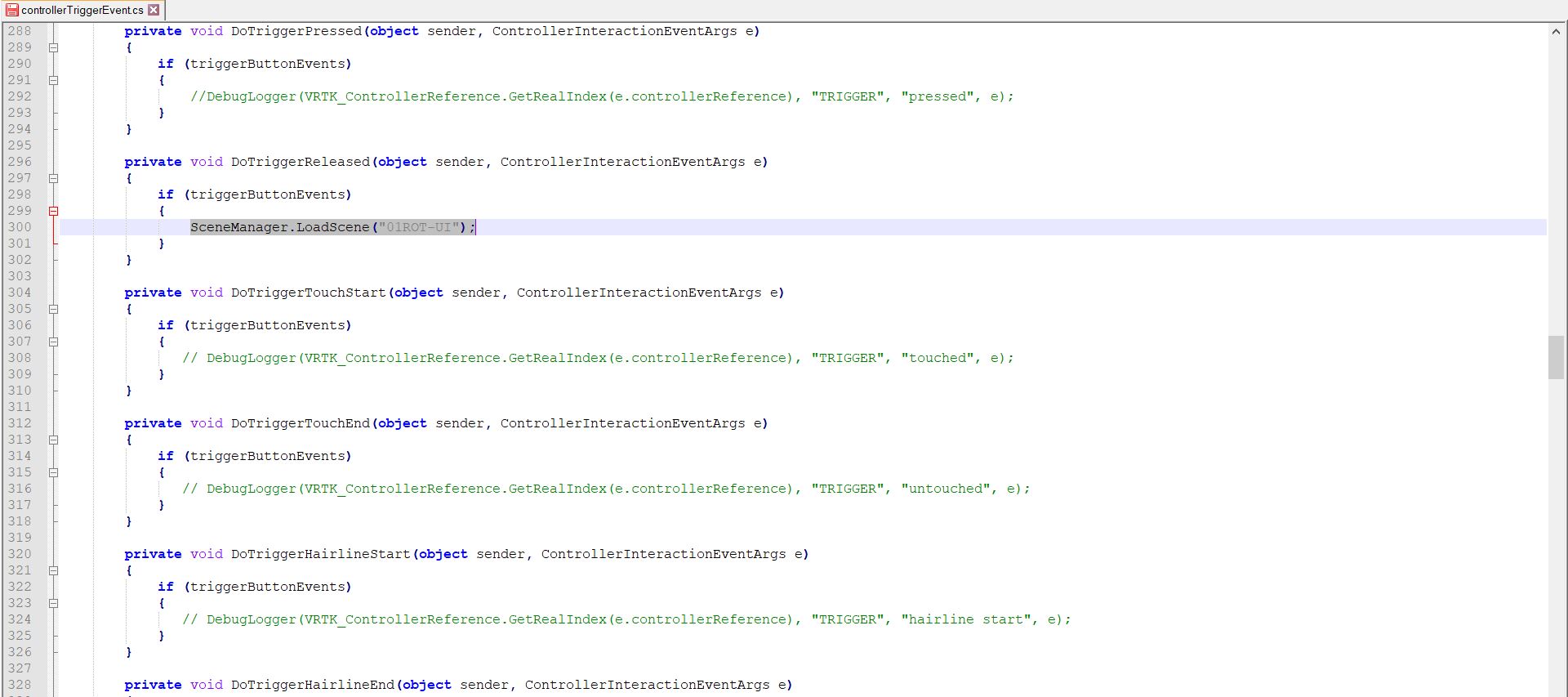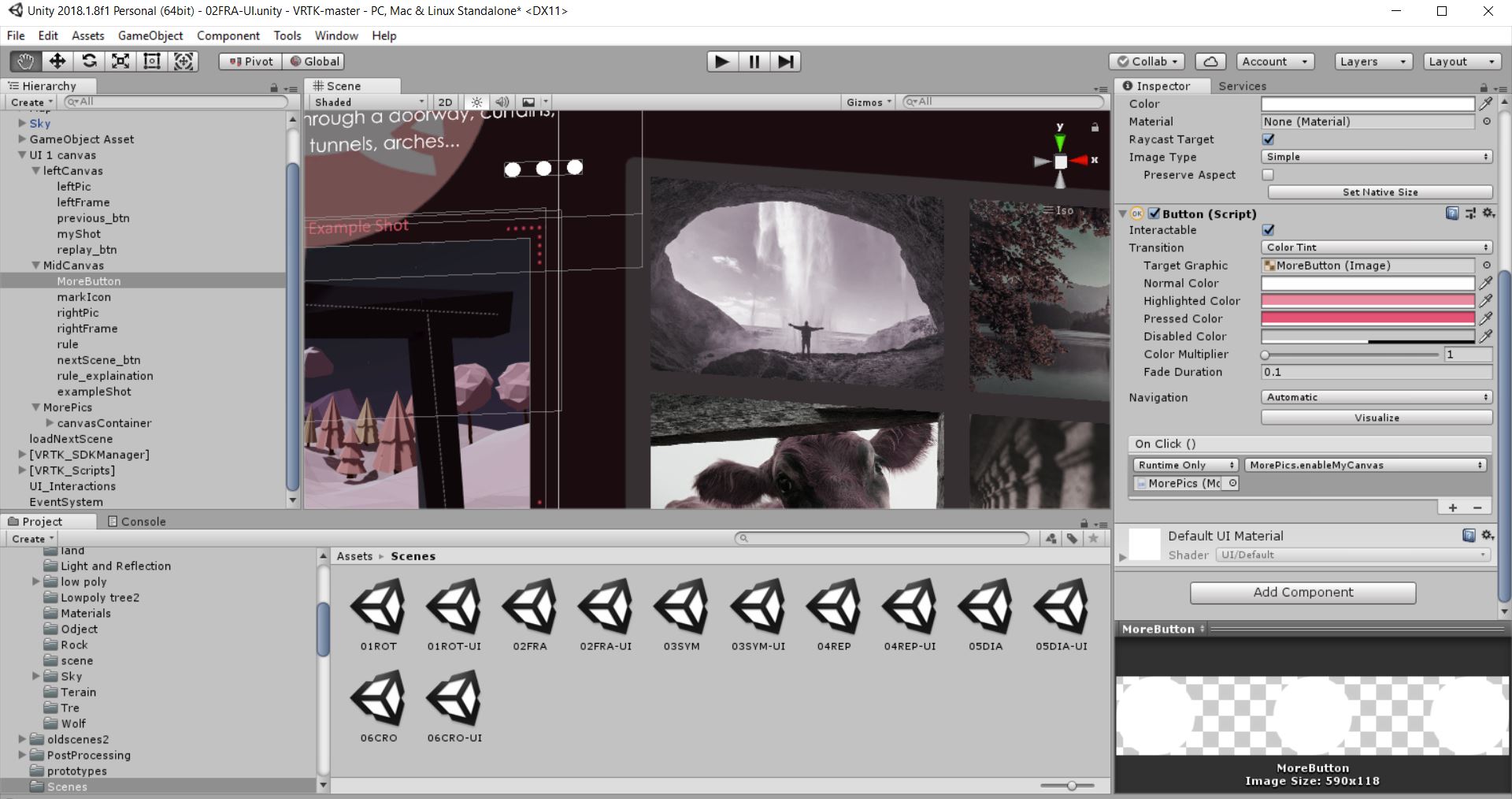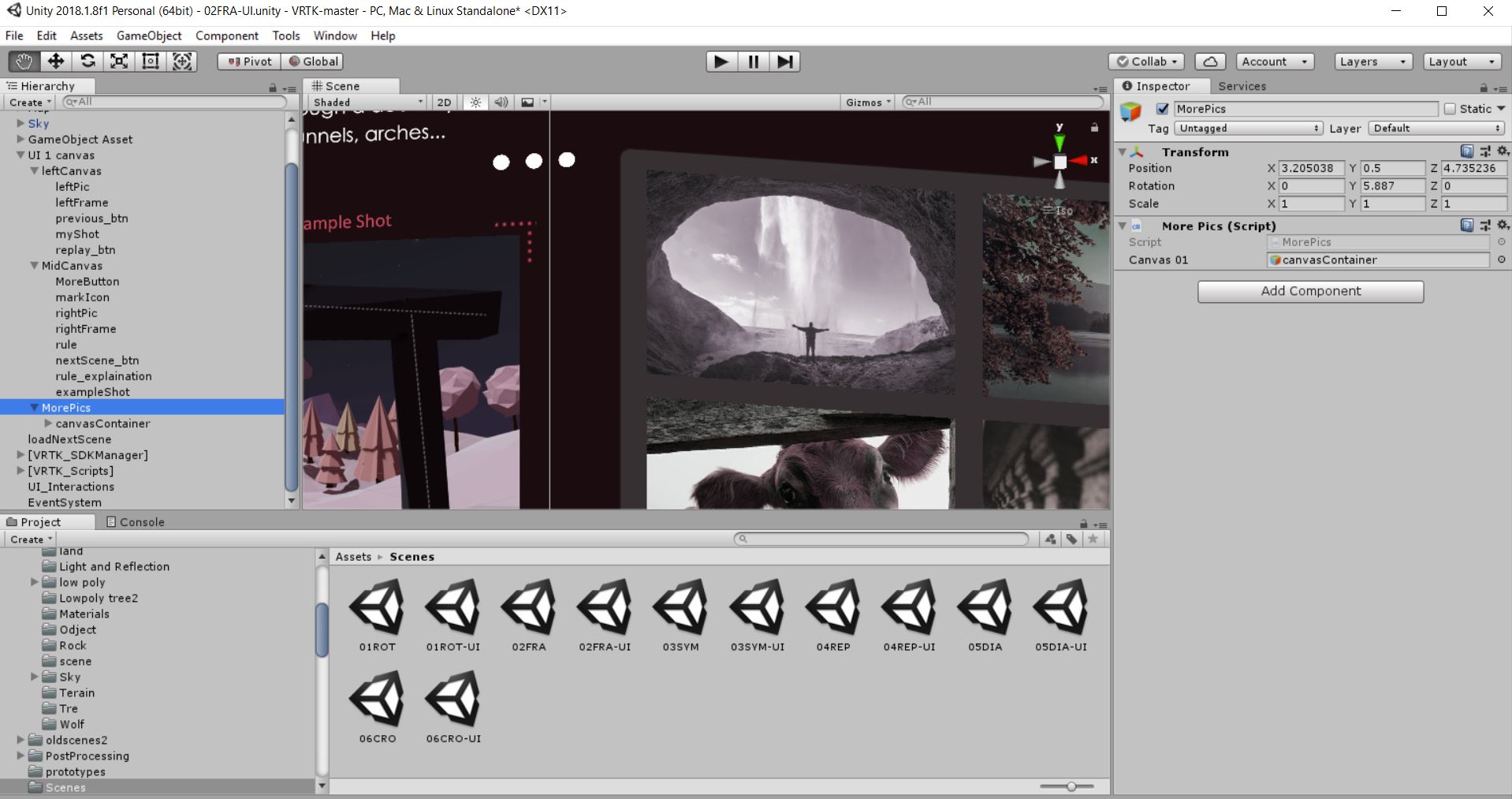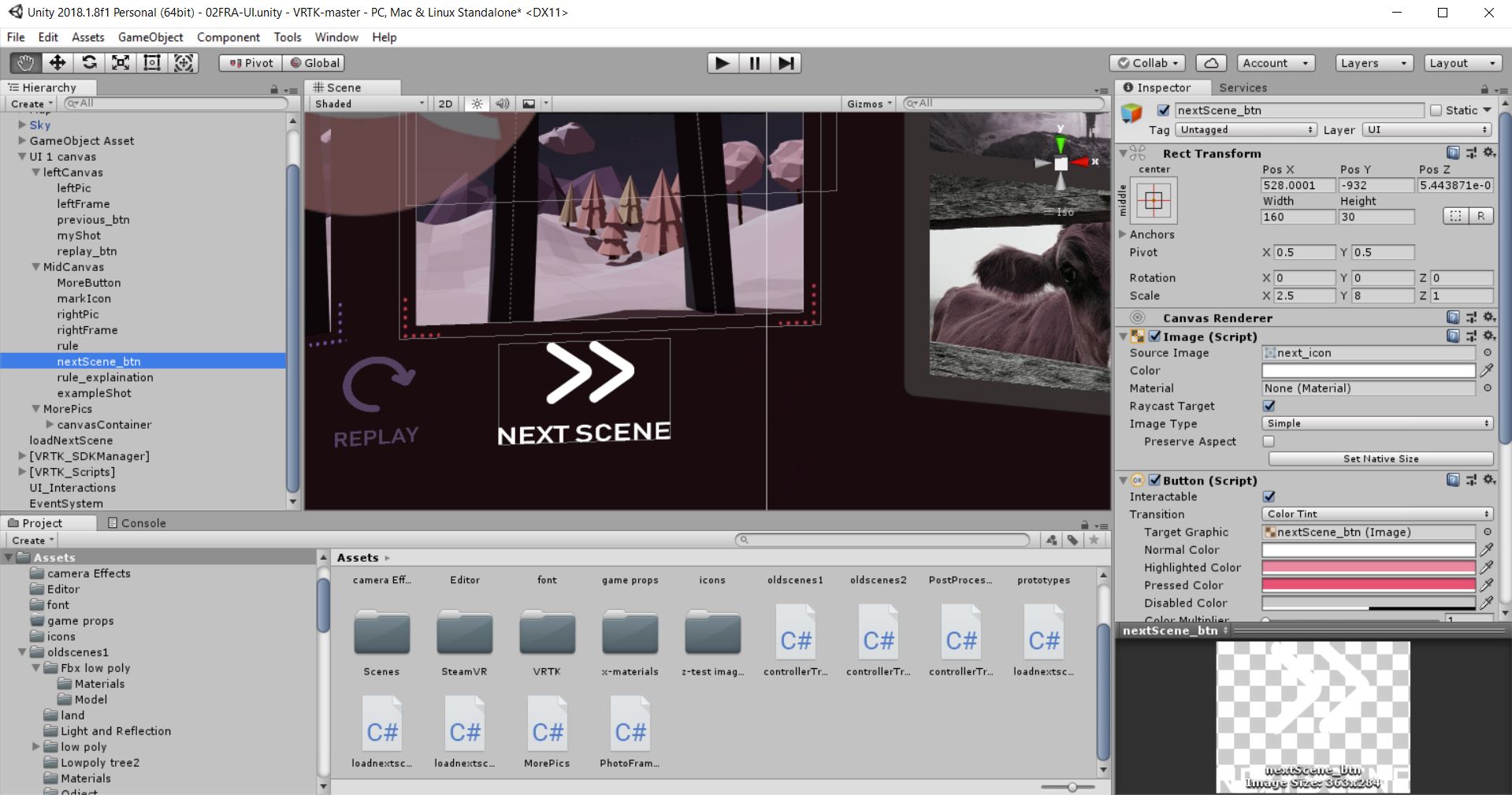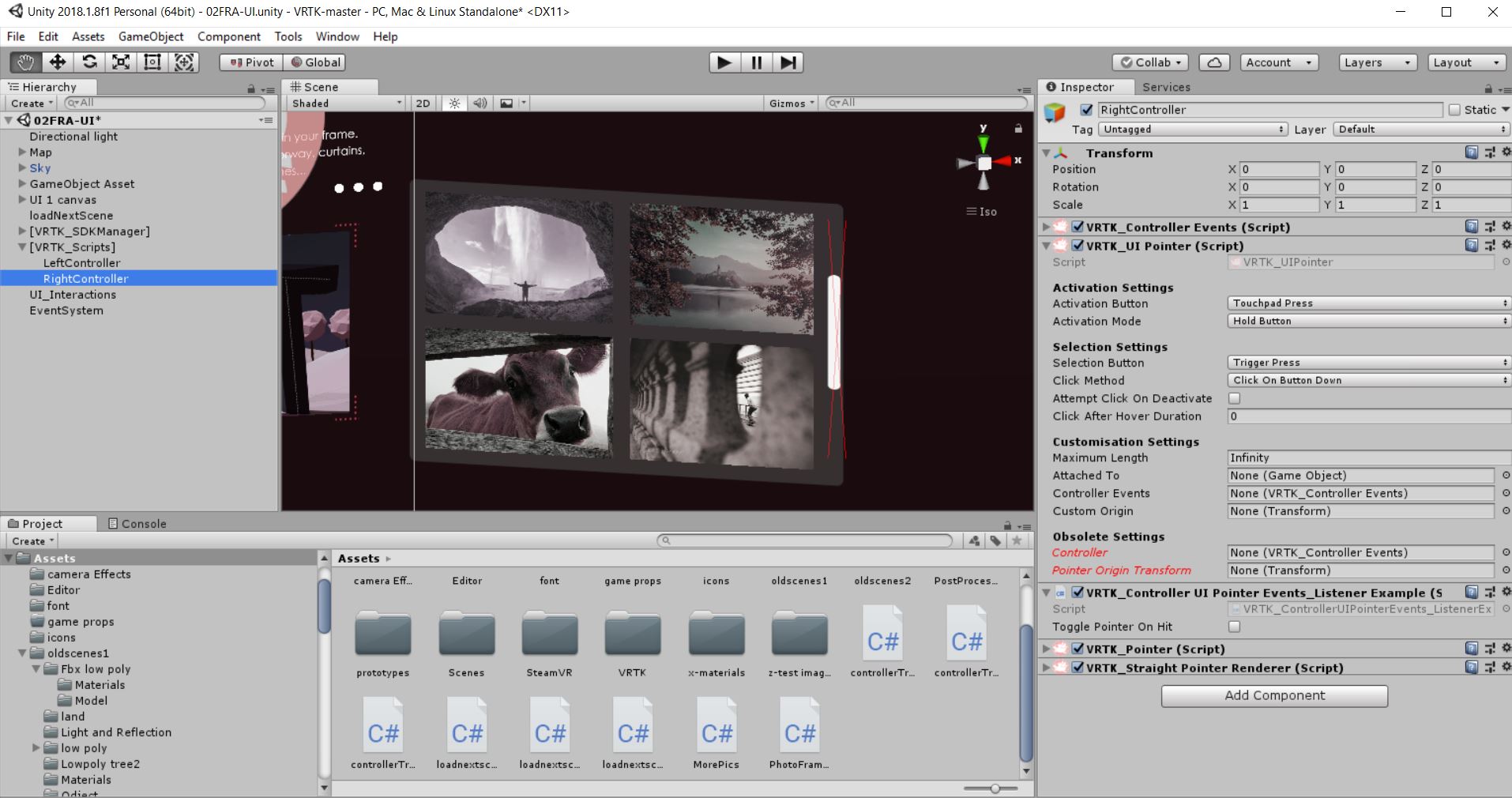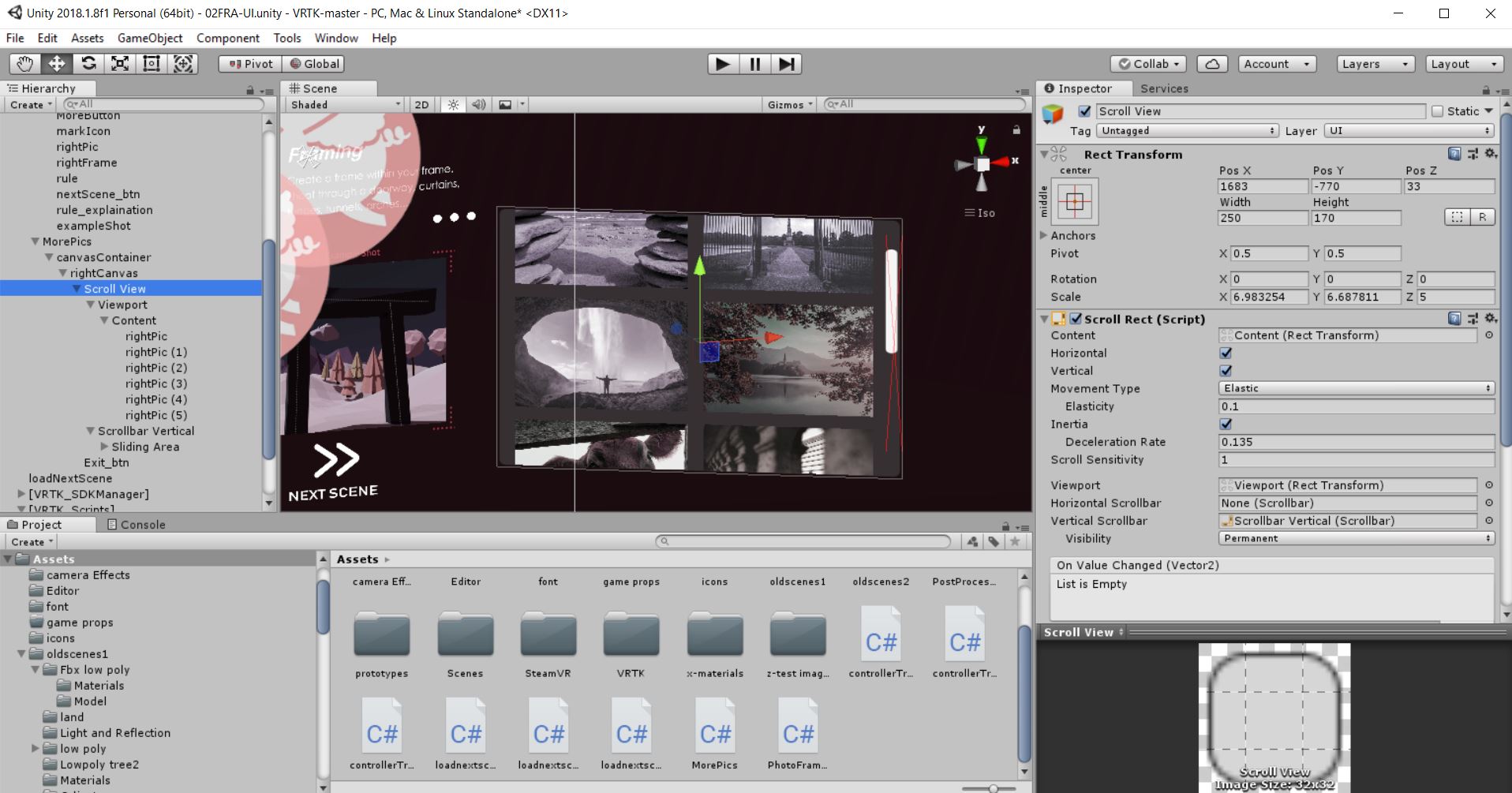Composition Land
VR Game That Teaches Photographic Composition Rules
(Please unmute the following demo for better viewing experience)
Independent Work | 2018 Skills: Product Design, VR Prototyping Tools: Unity, VRTK
What Is Composition Land?
Composition Land is a system of VR spots designed to reflect various composition rules in photography.
Players can shoot pictures at each spot and get rated by the pre-defined algorithm to improve their composition skills.
For the purpose of this game, we'll focus on 6 major composition rules:
Key Features
Adjust Position & Angle To Take Your Shot
After Your Shot, Get Rated & Learn About The Rules Before Entering The Next Scene
User Interview
Learning Theory
Feature Prioritization
Paper Prototyping
Level 1: Learn
Players are asked to take photos at various spots without prior composition knowledge.
Only after they complete each shot will they be exposed to the related composition rule.
Players get rated of their familiarity with each rule by the algorithm, which will inform future practice plan.
Level 2: Practise
The player will visit a list of spots and take pictures at each place according to the recommended composition rules at each place.
However, the recommendation usually contains 2 or more rules in order to pose a reasonable challenge.
The player keeps on taking pictures until all the spots are completed when they'll receive the overall performance rating and corrections.
Level 3: Create
When players find a certain place compatible with a particular composition rule, they can strike out a "composition spot" there. By taking pictures there, save the location and label the rule used at that spot, every player can add new "composition spots"
to their private library or to the public database.
Level 4: My Spots
"My Spots" is a list of spots either saved or created by the player, categorized by the composition rules they represent.
From paper prototype test, it was found that players would get tired very quickly if they have to press 2 buttons to take a picture.
Hence, I removed the "ready" step, making the photo-ready framed viewport a default.
I also discovered that Level1, 2 are more keen to users' needs, thus I proceeded into prototyping in 3D for L1,2 only.
User Task Flow
Unity Prototyping
The purpose of 3D prototyping is to examine the UI layout and interaction flow in actual VR settings. During the test,
I found that the rating display as well as demonstration photo stream should be placed lower to save users from constantly having to look up.
The size of photo stream (3pics) module should be reduced to convey visual priority.
Level 1 - Prototype V1
Level 1 - Prototype V2
Interface Design
Scene Building
In order for users to focus on learning the composition rules, other visual distractions were minimized.
The scenes were designed to be simplistic and composition-rule-reflecting with a VR-friendly low-poly style.
VR Development
Final steps are enabling controller interactions, audio, and scene transitions in Unity using VRTK.
What I learned
“Paper prototyping is still the fastest way to convey ideas, even in VR.
Designing in VR is the thing to try. The traditional 2D->3D workflow needs to be advanced.”
Future Work
1. Profile Page: keep track of your training history and visualize your composition skills
2. Social Aspect: enable "invite other photographer" / "online multi-player seminar" function
3. Rating System: realize the rating system through machine learning
4. Advanced scene: introduce more complex scenes (mimicking real-life scenario) that may embody multiple composition rules
5. Gesture Input: use Leap Motion as input medium for VR, design gestures that preserve the photography experience
6. Add More Rules: enable the user to add composition rules into the system as UGC






